LG G5 is a television that not only continues but also expands on what we loved about the previous models in the G series. Instead of following the conventional path, LG opted for a new Tandem OLED panel – and it hit the mark. Picture brightness? Simply, F E N O M E N A L. HDR effect? Close to reference. Colours after calibration? Nearly perfect. Motion smoothness, low latency, and features for gamers? At absolutely top-notch level. The G5 performs well in both movies and games, day and night, with a decoder, console, PC, or even just the remote. Of course – it’s not a product without flaws. It's a shame there’s no support for DTS, viewing angles have worsened compared to its predecessor, and the remote may vary depending on the version. But when we look at the overall picture, it's hard not to get the impression that this is one of the best OLED televisions available on the market, and perhaps even the best. Definitely, when it comes to its versatility and picture quality without the need to resort to extremely expensive models from competitors. If you're looking for a television for everything – for cinema, gaming, a bright lounge, streaming internet content, or connecting a computer – the LG G5 is gear that simply delivers on every front without compromise.
- Matching (Score)
- Our verdict
- TV appearance
- Where to buy
- Contrast and black detail
- HDR effect quality
- Factory color reproduction
- Color reproduction after calibration
- Smoothness of tonal transitions
- Image scaling and smoothness of tonal transitions
- Blur and motion smoothness
- Console compatibility and gaming features
- Input lag
- Compatibility with PC
- Viewing angles
- TV efficiency during daytime
- Details about the matrix
- TV features
- Apps
- Playing files from USB
- Sound
LG OLED G5 vs SAMSUNG S95F (TANDEM OLED 83")
Direct compare
G54 / G51 / G55 / LW / LS
S95F / FAT / FAE
Available screen sizes: 83”
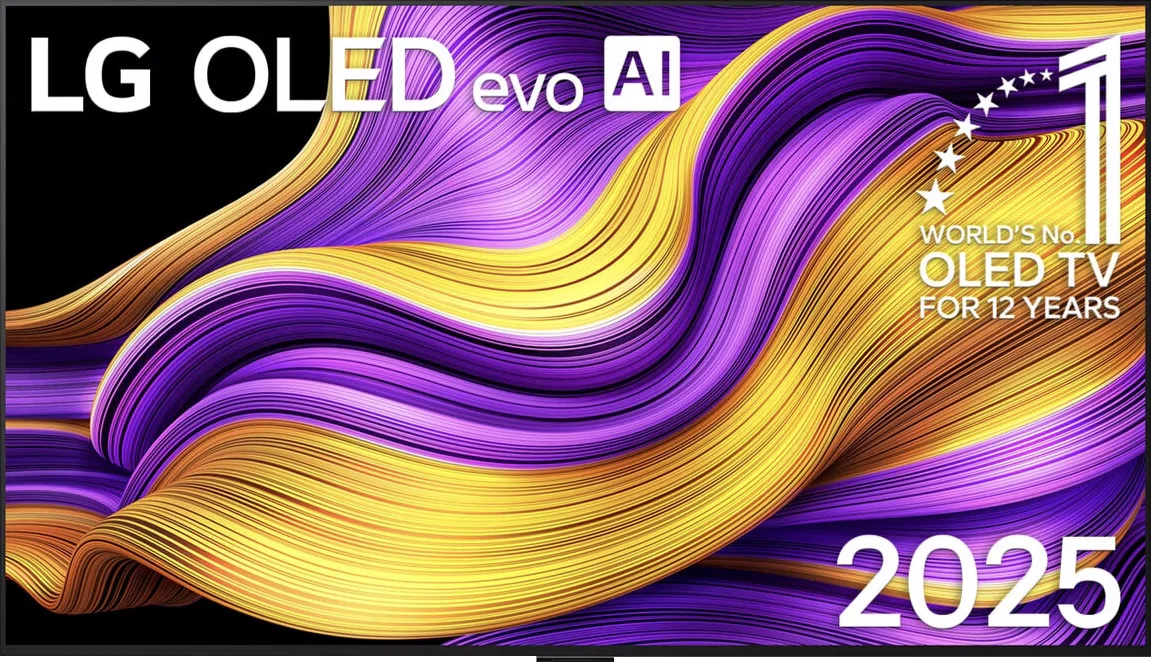
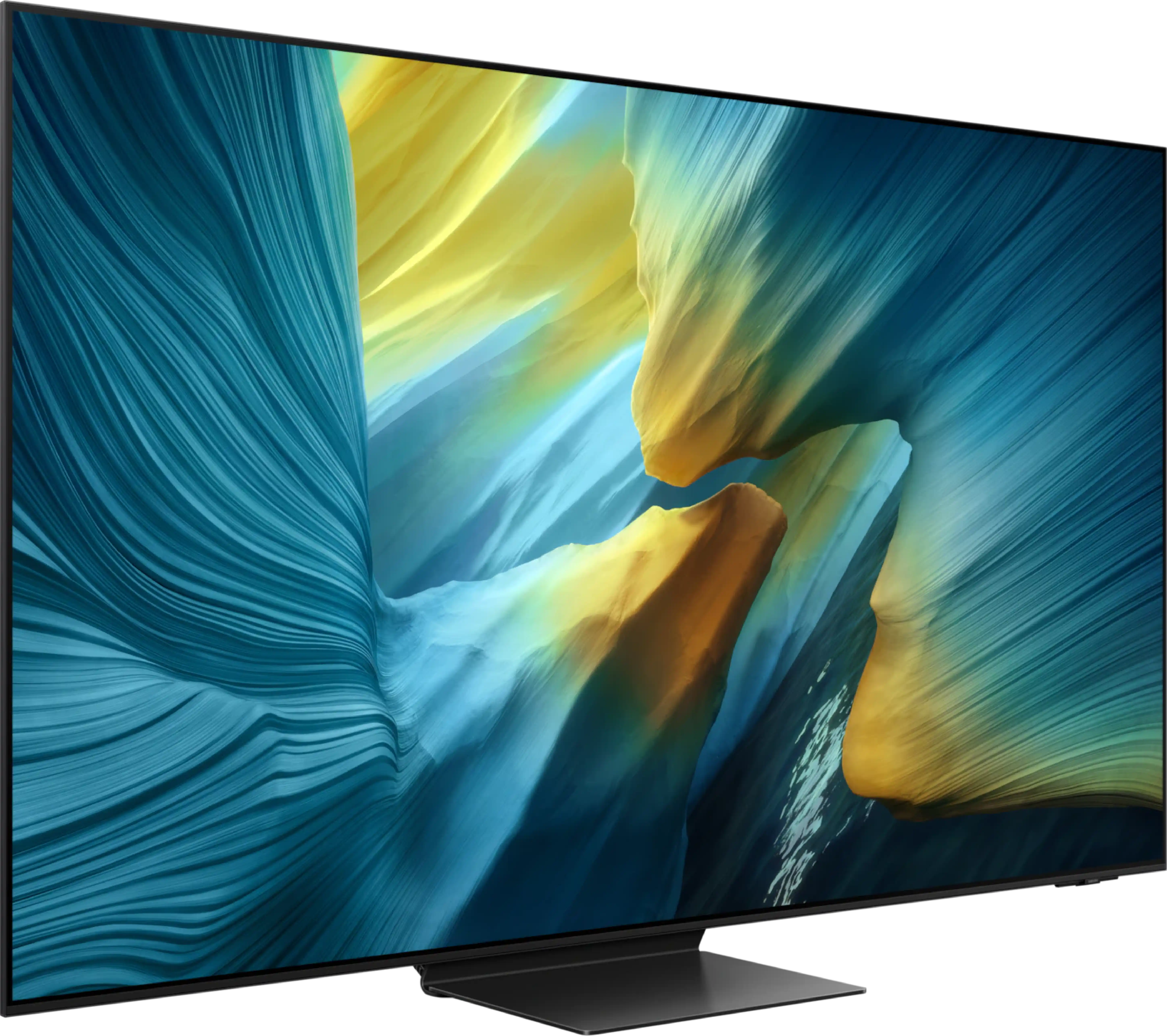
Panel type: WRGB OLED
Resolution: 3840x2160
System: WebOS
Model year: 2025
Complete the survey to find out the result

Panel type: WRGB OLED
Resolution: 3840x2160
System: Tizen
Model year: 2025
Complete the survey to find out the result

Overall rating
8.9
8.7
Movies and series in UHD quality
9.2
9.0
Classic TV, YouTube
9.2
9.0
Sports broadcasts (TV and apps)
8.8
8.6
Gaming on console
9.5
9.8
TV as a computer monitor
8.8
8.8
Watching in bright light
8.0
7.7
Utility functions
8.5
7.9
Apps
9.1
8.7
Sound quality
8.7
8.0
Complete the survey to find out what fits your preferences
Advantages
Amazing black and contrast
Reference colour reproduction after calibration
Very high brightness in HDR content
Excellent compatibility with consoles and computers
Great motion smoothness - OLED panel 165Hz
Many features for gamers: VRR, ALLM, HGIG, low input lag
Great WebOS operating system with many applications
Superb control with the Magic remote featuring a "cursor" function
Perfect black and outstanding contrast
High image brightness
Amazing image quality after calibration
Ultra-fast WOLED panel 165 Hz
Excellent choice for gamers – full support for HDMI 2.1, VRR, ALLM, and HGiG, with an input lag of just 5 ms
Very precise colour reproduction after calibration
Best reflection suppression thanks to the matte screen finish and better panel performance in challenging lighting conditions compared to the QD-OLED panel version
Intuitive and quick Tizen operating system with a rich set of features
Modern and stylish design
One Connect module for easy and aesthetic cable management
Disadvantages
No support for DTS audio format
Inferior (though still good) viewing angles compared to the predecessor G4
Different remote versions in derivative models – hard to predict which version we will get
No support for DTS:X (home cinema)
No USB recording from built-in tuners
Worse viewing angles (though still very good) than the version with QD-OLED panel
Our verdict
In the case of the 83-inch version, Samsung took a different route than with smaller diagonals and opted for LG Display's Tandem WOLED panel. This move initially raised questions but has proven to be right on the money in practice. We have here an exceptionally successful mix: absolutely reference black, excellent brightness allowing enjoyment of HDR content even during the day, and overall picture quality that firmly places this television at the top of the entire market. There are also features aimed at gamers – lightning-fast input lag, 165 Hz refresh rate, full support for VRR and G-Sync/Freesync, as well as four HDMI 2.1 ports that allow connection of multiple consoles or PCs without any compromises. Adding to the list of pros is the matte coating – rare in OLEDs, yet remarkably effective in this case. Thanks to it, light reflections are largely eliminated, and the television remains readable and comfortable to view even in a sunlit lounge. This is a feature that takes on even greater significance in such a large size, as it's hard to imagine an 83-inch screen on which instead of a movie, we see a reflection of our own room. Of course, there are compromises – the viewing angles on the WOLED panel are not as perfect as in the QD-OLED versions. However, in return, we get better performance in challenging lighting conditions and a more stable image when strong light hits the screen. In practice, it is hard to see this as a real downside, rather just a different distribution of emphasis compared to the smaller variants. The S95F in the 83-inch version is an almost explosive combination: a gigantic OLED with a matte coating, excellent brightness, fantastic black levels, and a complete set of features for gamers. If someone dreams of a massive, matte screen that isn't afraid of daylight, there is currently no better screen available on the market.
TV appearance


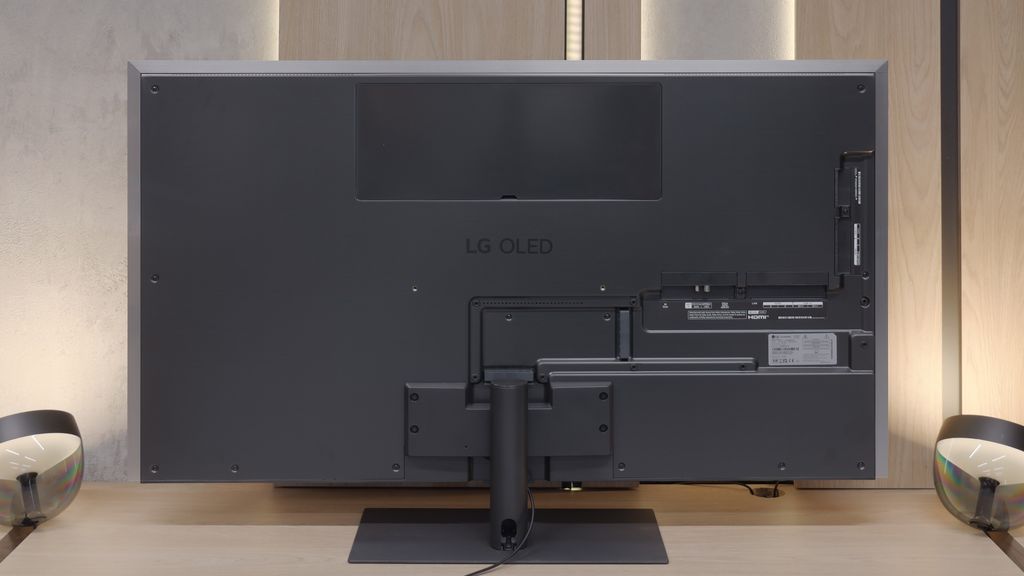
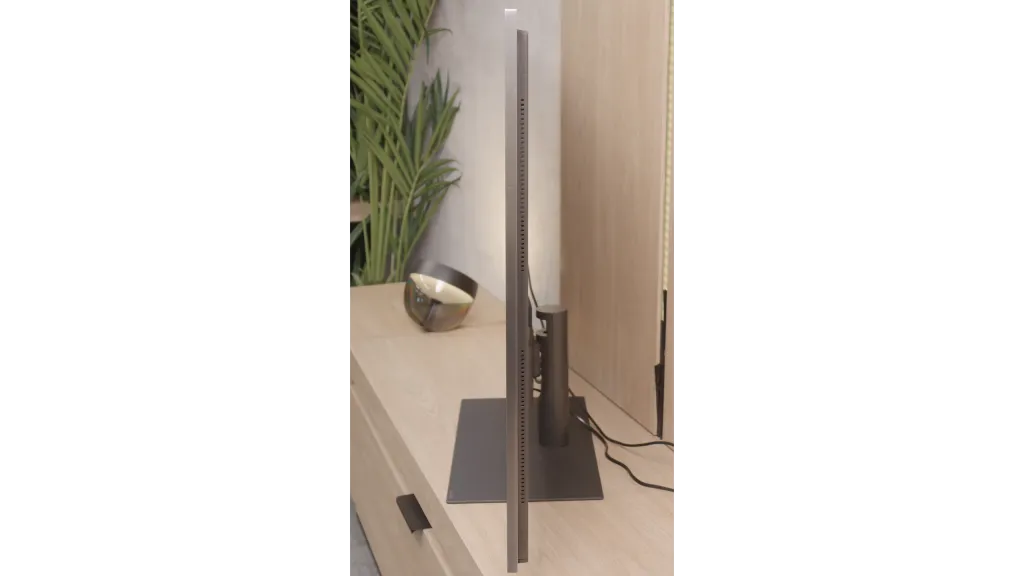
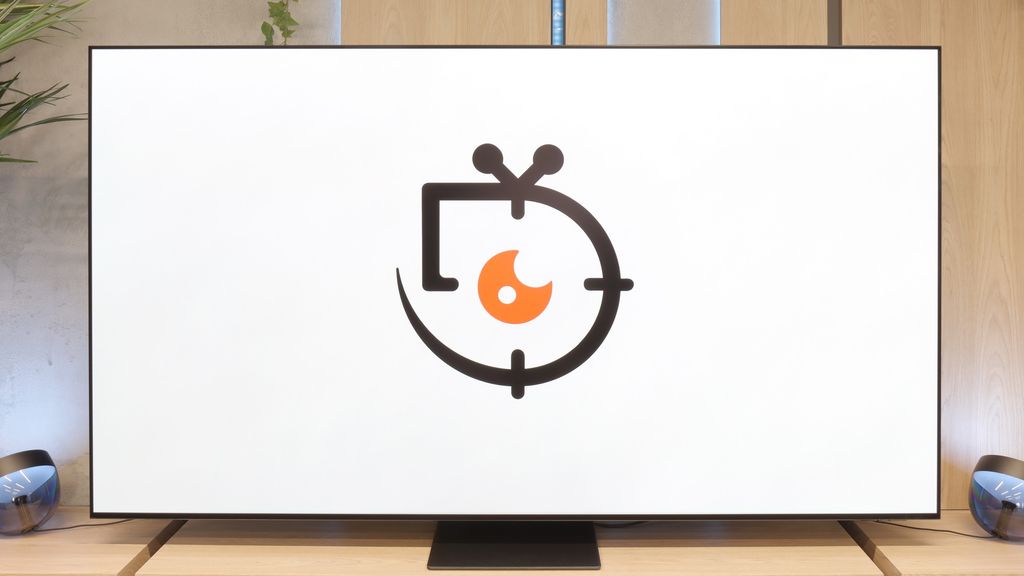
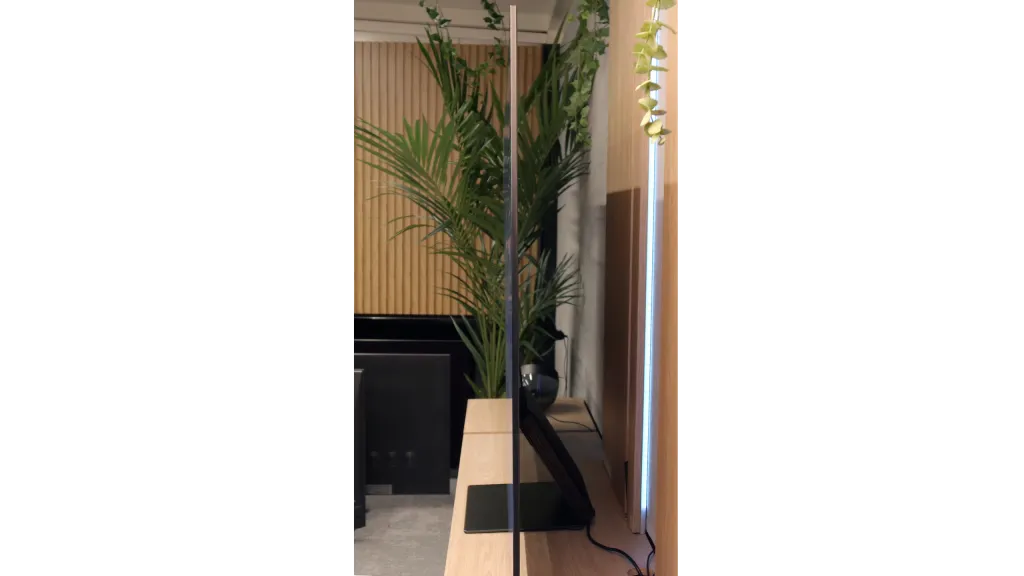
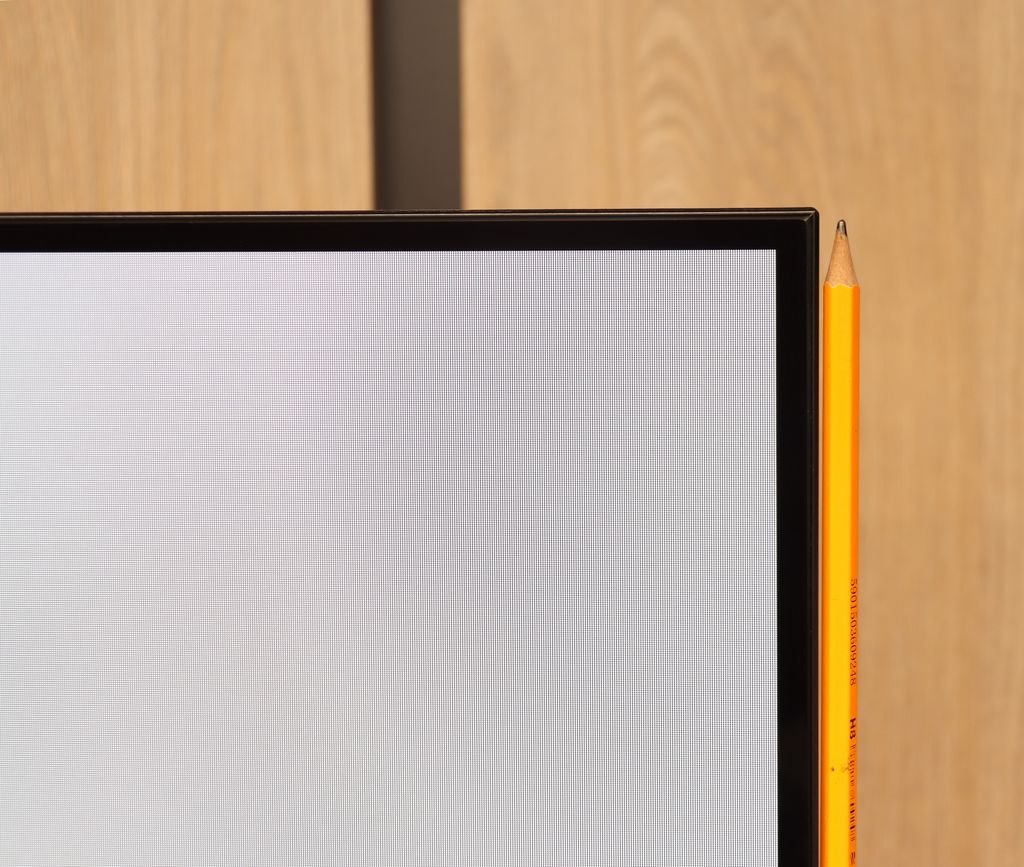
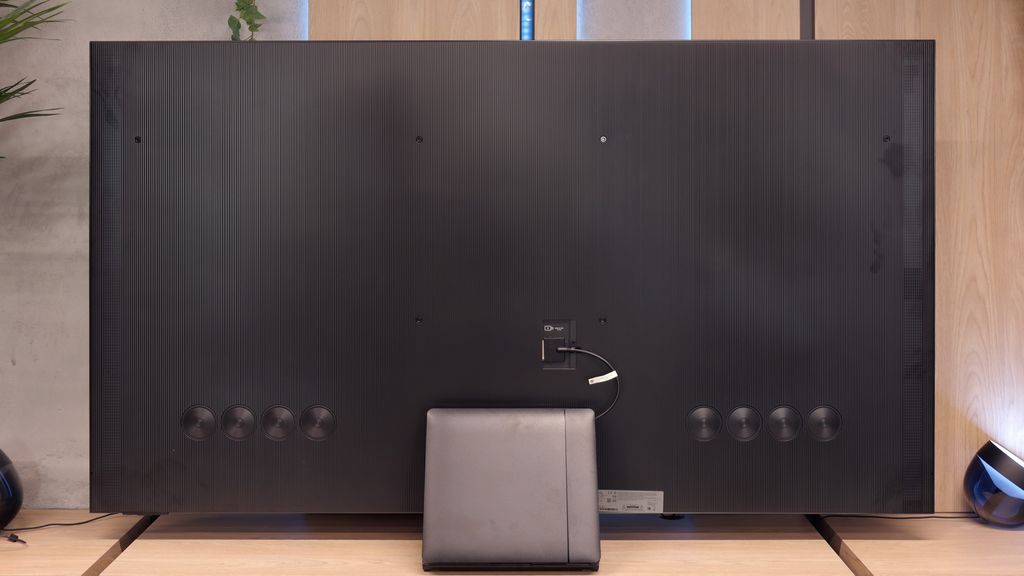
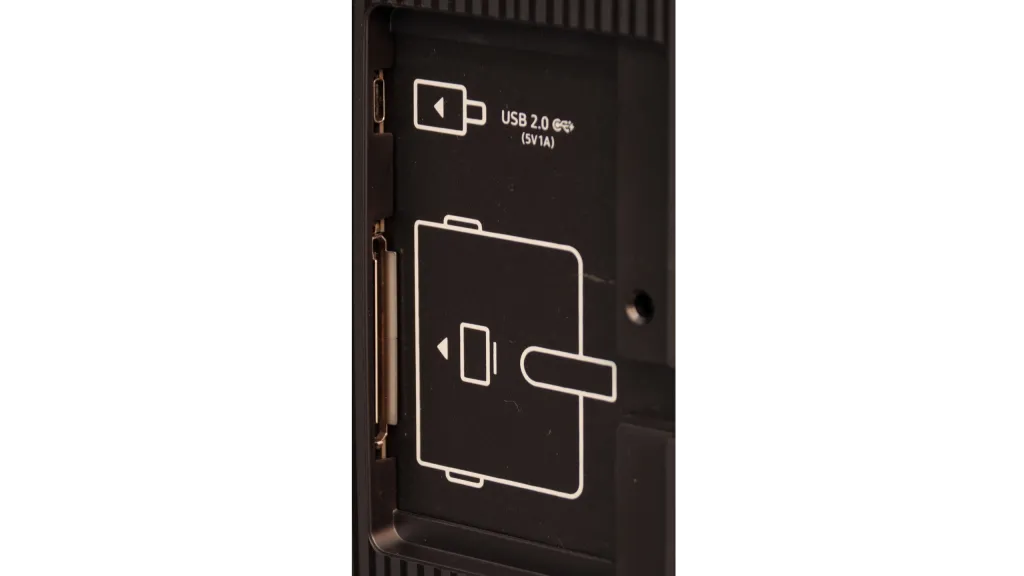
Contrast and black detail
10/10
10/10
Contrast:

Result
∞:1

Result
∞:1

Result
∞:1

Result
∞:1

Result
∞:1

Result
∞:1

Result
∞:1

Result
∞:1

Result
∞:1

Result
∞:1
Halo effect and black detail visibility:
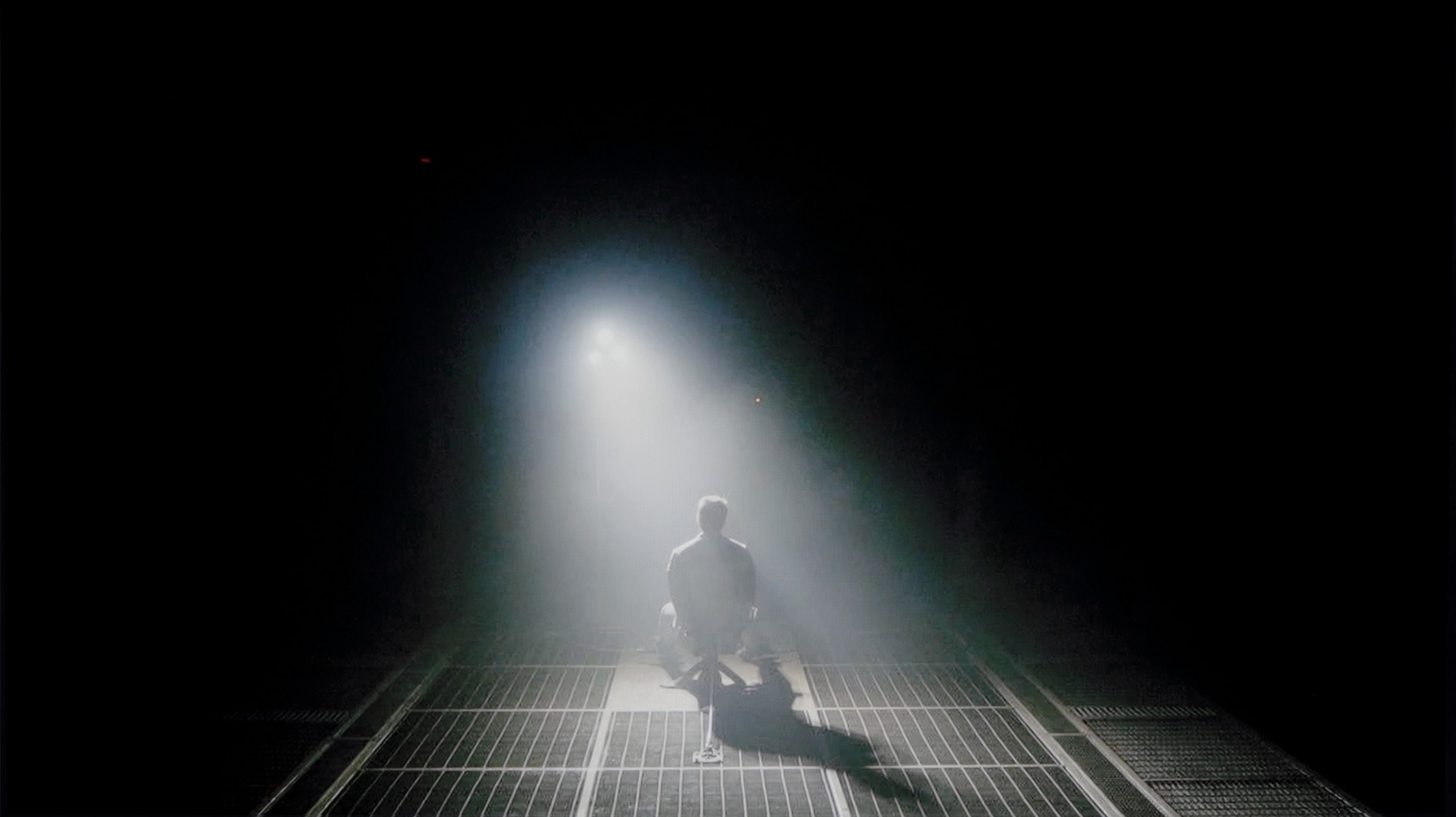
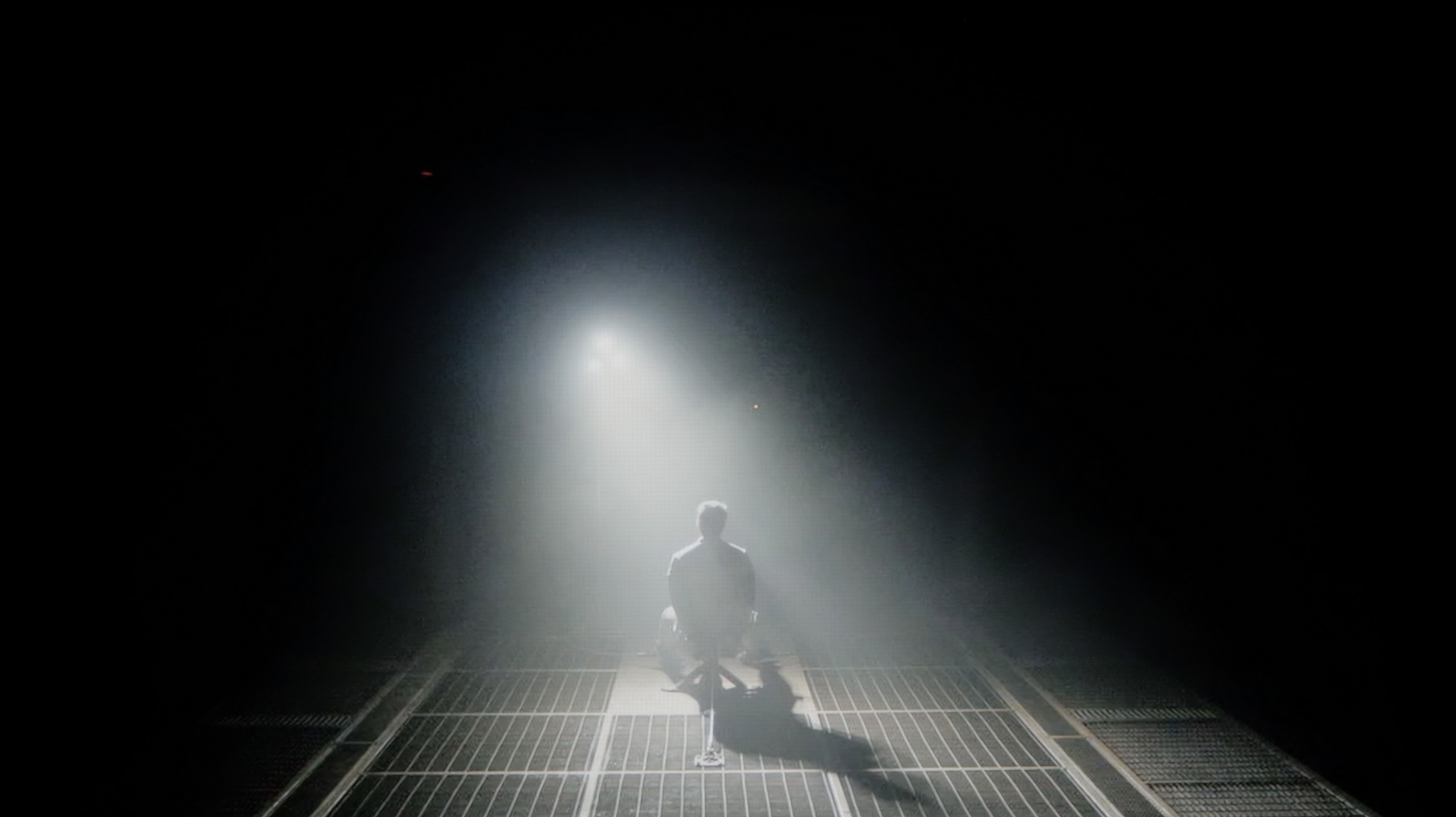
LG G5, as expected from an OLED television, impresses with its contrast and black levels. In scenes with a lot of dark areas, the screen presents itself almost perfectly, offering deep, absolute black and infinite contrast – an effect that still cannot be achieved on any LCD television. The new Tandem OLED matrix does not introduce any negative changes compared to previous generations – blacks are perfect regardless of the content. Watching scenes from movies like The Revenant or Oblivion, the excellent separation of lights is clearly visible, without blooming or lightening of dark parts. In this category, LG G5 deserves the highest rating.
The 83-inch version, equipped with a Tandem OLED panel, also offers an image that is truly breathtaking. Despite the different technology, the end result remains at an absolutely top level. The black is deep and uniform, without any bleed or imperfections, and the contrast is simply jaw-dropping. In dark scenes, every detail remains visible, and the separation of lights is perfect – nothing merges together, and the image looks as it should on a reference-class television. This is proof that regardless of the panel used, Samsung has set the bar very high in this series.
HDR effect quality
9.1/10
8.6/10
Luminance measurements in HDR:

Result
2346 nit

Result
2353 nit

Result
2399 nit

Result
2353 nit

Result
2012 nit

Result
2074 nit

Result
2107 nit

Result
2330 nit

Result
2165 nit

Result
1083 nit
Scene from the movie “Pan” (about 2800 nits)


Scene from the movie “Billy Lynn” (about 1100 nits)


Static HDR10


Dynamic: Dolby Vision
Dynamic: HDR10+


HDR luminance chart:
SAMSUNG S95F (TANDEM OLED 83")
HDR luminance
Luminance of RGB colors
LG OLED G5
HDR luminance
Luminance of RGB colors
LG G5 with its new Tandem OLED panel brings the biggest change in terms of TV brightness. And it’s substantial. This is a truly astronomically bright OLED. In every scene tested – whether it's point lights or full-screen whites from the movie The Meg – brightness on the G5 exceeded 2000 nits. Just a year ago, such values on an OLED were simply unimaginable. And here we are – the G5 is approaching, and at times even surpassing, the best Mini-LEDs on the market. A novelty in the Tandem OLED panel is also the expanded colour gamut coverage – and here the LG G5 performs almost perfectly. DCI-P3 achieves a full 100%, while BT.2020 hovers around 83%. These are some of the highest values currently available on the market – it's hard to find any other TV that comes close to such results, unless we're talking about the best displays with QD-OLED panels. The G5 has almost reference-level HDR quality – both in terms of brightness and colour saturation. This is an OLED that can truly shine – and not just metaphorically.
The Samsung S95F in the 83-inch variant with a Tandem OLED panel also enchants with its HDR effects. In test movie scenes, such as “Life of Pi” or “Sicario 2,” where smaller light points dominate – stars in the night sky, the glow of the moon, or headlights – the TV easily achieves brightness levels surpassing 2000 nits. This is a result that not long ago seemed unattainable for OLEDs and places this model in the same category as the best Mini-LED constructions.
The limitations of organic panels only emerge in full-screen scenes completely filled with white. In the case of this model, for example, in the final scene of the film The Meg, brightness drops to around 1000 nits – slightly lower than in the smaller QD-OLED variants, where the result hovered around 1400 nits. Nevertheless, we are still talking about an outstanding result, unprecedented in OLED TVs of this size. The colour reproduction is equally impressive. The new Tandem OLED panel nearly catches up to QD-OLED TVs, offering excellent coverage of a wide colour gamut. The results are slightly weaker than those of QD-OLED, but in practice, they still provide an image whose intensity and naturalness of colours are hard to compare with any other television.
Factory color reproduction
7.8/10
6/10


Factory Mode
After calibration


Factory Mode
After calibration
Our test unit LG G5 had some issues in the factory Filmmaker mode. While the picture might have seemed fine to most people, we knew this TV could do much more. This mode had a noticeable excess of blue tint in the white balance, resulting in a strongly cooled image – especially in HDR modes, where there was additionally a lack of red. The image appeared cold, and its sharpness was artificially boosted and unnatural. Another significant problem was the brightness characteristics. In SDR content, the situation wasn't the worst, aside from a slight dimming of the entire image. However, it fared much worse in HDR materials – due to improper brightness management, the smallest details could completely disappear from the image, while larger, bright elements looked overexposed and lacking in gradation. Fortunately, the G5 supports calibration using 3D LUT (a professional tool for colour calibration), so we decided to take advantage of its professional capabilities and see what it was really capable of. Because while it wasn't terrible even before calibration, the potential of this TV definitely deserved more.
The best picture mode right out of the box is undoubtedly Filmmaker Mode. This mode has been present in Samsung televisions for several years and is intended to reproduce the image as faithfully as possible to the creators' vision. In SDR material, it performs reasonably well, though not without flaws. The image is slightly dimmed, and the white balance tends to shift towards red and blue, resulting in a slight pinkish tint on the screen. Average colour errors hover around values of ΔE 3–4, which is on the borderline of what most people can detect with the naked eye.
The limitations are much more apparent with HDR content. Here, a slight excess of blue in the white balance isn't such a big issue – the real obstacle is how the television manages brightness. In many scenes, the image looked as if it had been blown out, and details in the blacks could completely vanish. The final effect didn't do justice to what such a device is capable of, leading to significant colour inaccuracies. It's hard to understand why such a factory characteristic was chosen, as the perception of HDR in this rendition was definitely not what it should have been.
Color reproduction after calibration
9.8/10
9.4/10




After completing the calibration process with professional tools, we can confidently state this – the LG G5 offers almost reference-quality image. Most of the errors related to white balance and the ColorChecker test are below a value of 2, which is a phenomenal result, practically imperceptible to the human eye. And while one could still nitpick that in HDR films the TV still has a tendency to slightly dim the smallest elements of the image, in practice this does not negatively affect the overall reception. Hats off to LG, as once again they provide users with enormous display settings options – and this, combined with very good parameters of the panel itself, results in an image that is truly hard to beat.
After calibration, the S95F shows what it can really do. The white balance has been straightened out, and minor inaccuracies have been corrected, making the image in SDR content look nearly exemplary. Colour differences have fallen below the level that the human eye can detect – looking at the screen, one just gets the impression of complete naturalness and harmony of colours.
In HDR, the improvement is equally noticeable. The TV handles brightness much better, and there’s no longer the 'blowing out' of the entire frame. Bright scenes are more controlled, and blacks retain more detail, though sometimes a slight brightening of the overall image can still be noticed. However, this doesn’t change the fact that after calibration, the S95F delivers an image that can confidently be called one of the best on the market – regardless of whether we’re watching movies in SDR or spectacular productions in HDR.
Smoothness of tonal transitions
8.5/10
8.6/10












The fluidity of tonal transitions in the LG G5 is a clear step forward compared to last year's model. Not only has brightness improved, but also the way colours blend, which the G4 sometimes struggled with. In the vast majority of scenes, the G5 has no issues with tonal transitions – there’s no typical banding associated with WOLED technology nor any ugly breaks between colours. Of course, in very dark areas of the image and with shades of grey, small imperfections can still be noticed, but these are things that the average viewer wouldn't even register. In short – it's really good.
The S95F version with the Tandem OLED panel also handles the smoothness of tonal transitions very well. Although WOLED panels have not typically been the strongest in this category, it is hard to find any serious issues here. The colour gradation is smooth and natural, and the only minor imperfections may appear with lighter colours. However, they are not significant enough to detract from the overall image quality – the whole presentation is at a truly high level.
Image scaling and smoothness of tonal transitions
8.7/10
7.5/10
Smooth transition function
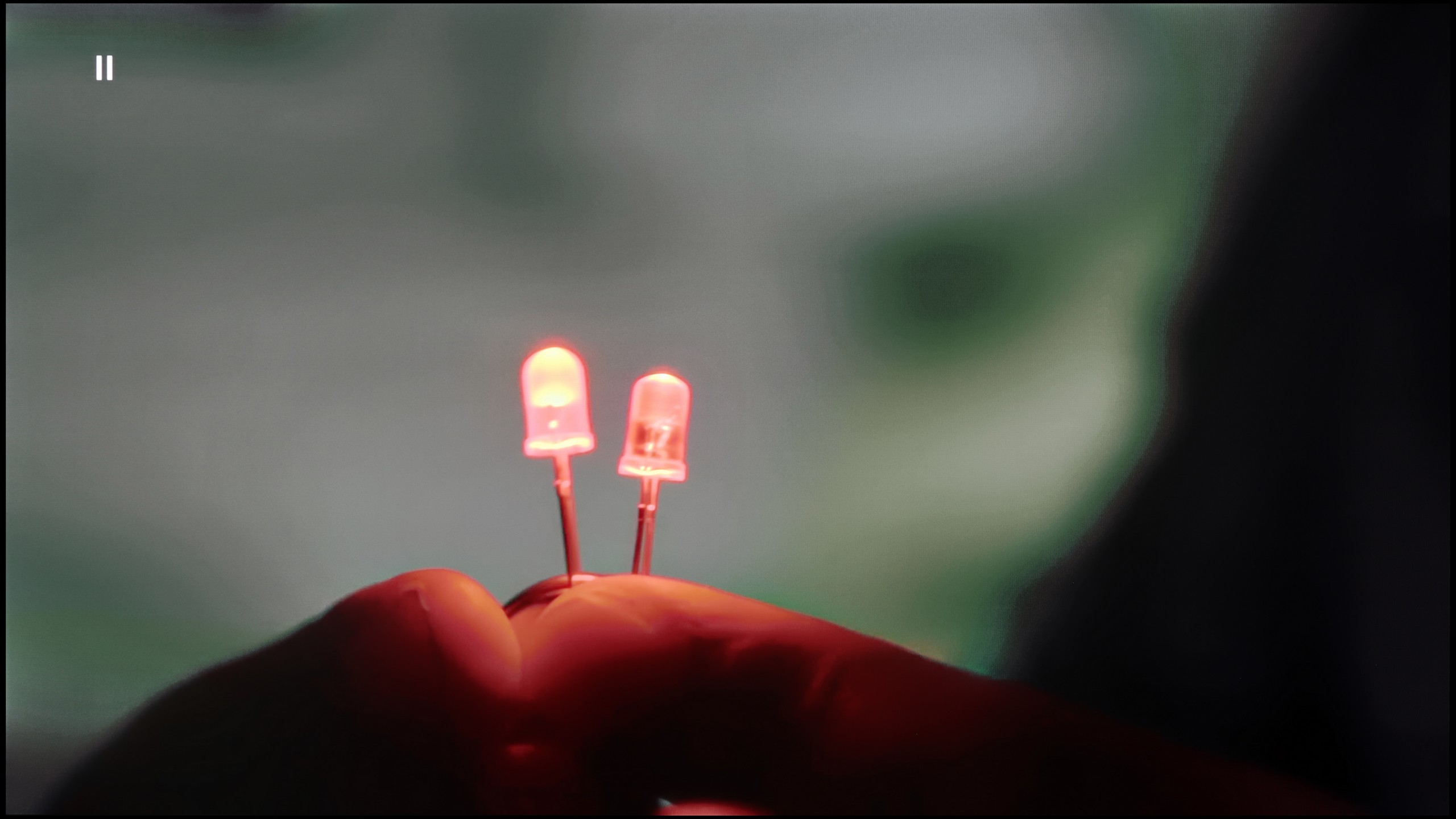
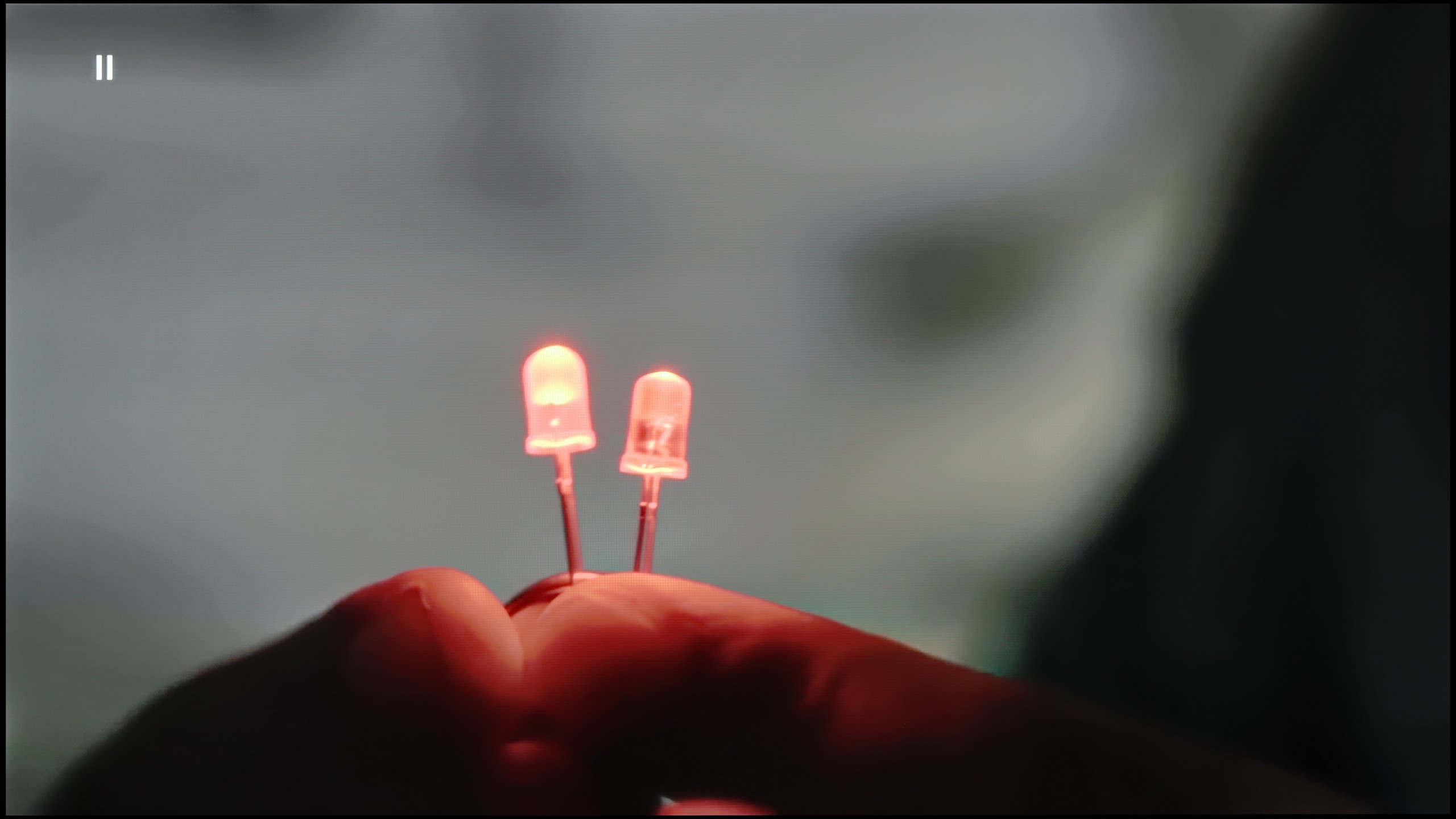
Image without overscan on the SD signal


Upscaling and digital image processing in the LG G5 performs very well. The television handles lower quality content excellently, especially when the "Smooth Gradation" feature is set to a low level. In this mode, it effectively removes undesirable artifacts and issues with visible tonal transitions. It may also slightly smooth out some desirable details, like the subtle texture of clothing or skin, but importantly – it does not remove film grain, so it's hard to talk about a serious compromise here. This is one of those options that is actually worth turning on.
The G5 also does well with upscaling, which is improving the quality of older materials. The test image with the model looked really solid – slight jaggedness was visible, but that's an effect that can't be completely avoided. On the plus side, there were no overscan issues, which – contrary to appearances – is not obvious, even in 2025.
The Samsung S95F model features noise reduction, aimed at improving the fluidity of tonal transitions. Its effectiveness is difficult to call ineffective – on the contrary, it can excessively interfere with the image. Older films or materials of lower quality, such as those from YouTube, take on a soft, smoothed character reminiscent of a painting effect thanks to this feature. The problem is that along with the noise, the natural film grain, which gives the image a cinematic quality, also disappears. Fortunately, the feature does not blur significant details, so its use is more a matter of preference. If someone prefers a slightly polished and smooth image, it’s worth turning it on, but in our opinion, the most sensible setting is “Standard”.
Upscaling leaves a better impression. The S95F efficiently enhances the quality of lower resolution content – even 576p videos look quite good, although minor artifacts in the form of blockiness can be noticed. Overall, the effect is very solid, although when compared to the competition – such as the Sony Bravia 8 (II) or LG G5 – it is noticeable that those models can extract a bit more from the image. However, one inconvenience to remember is that in the case of older films and photos, there is a problem with overscan, which causes a slight trimming of the left edge of the image.
Blur and motion smoothness
8.5/10
8.5/10
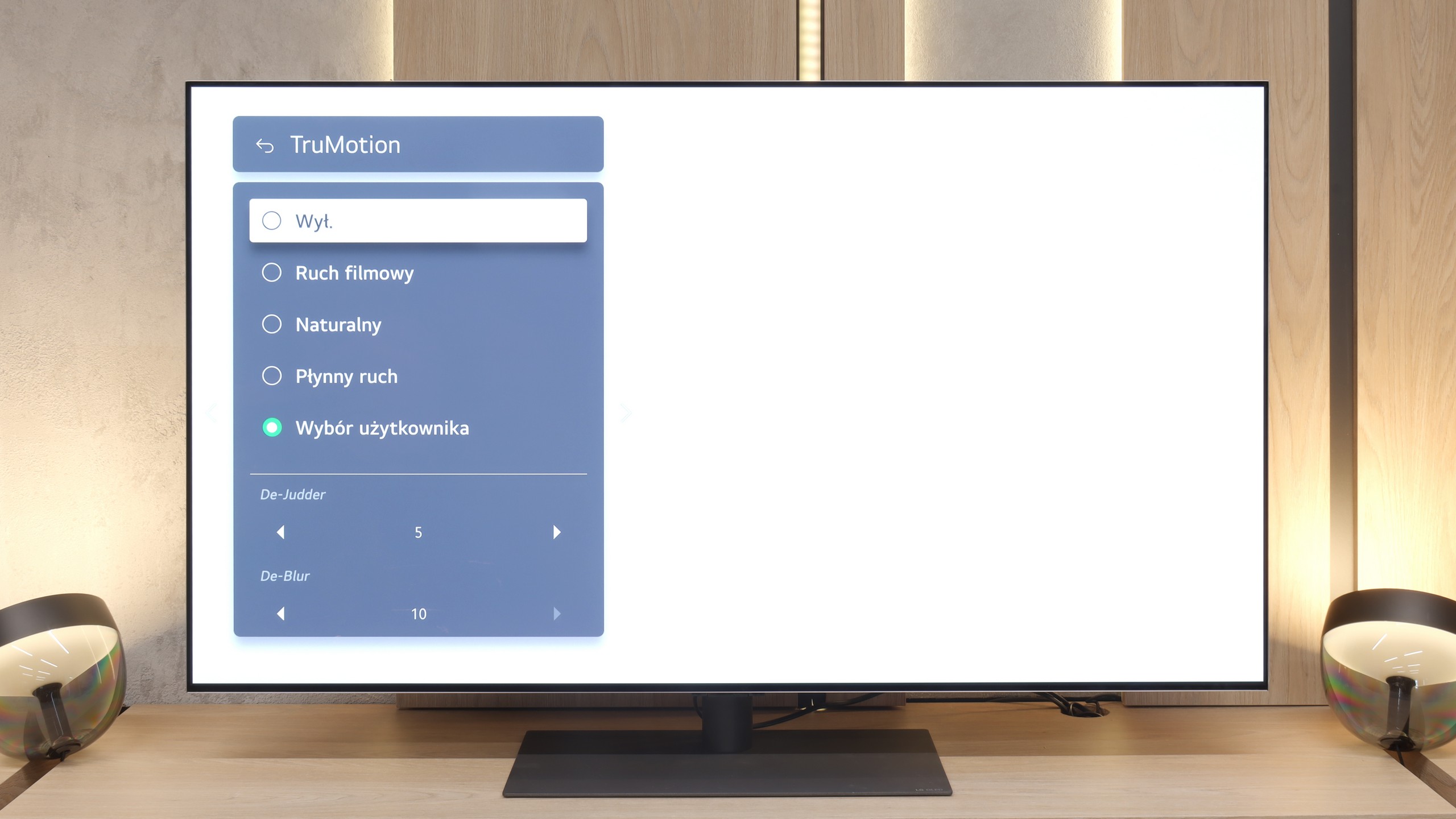
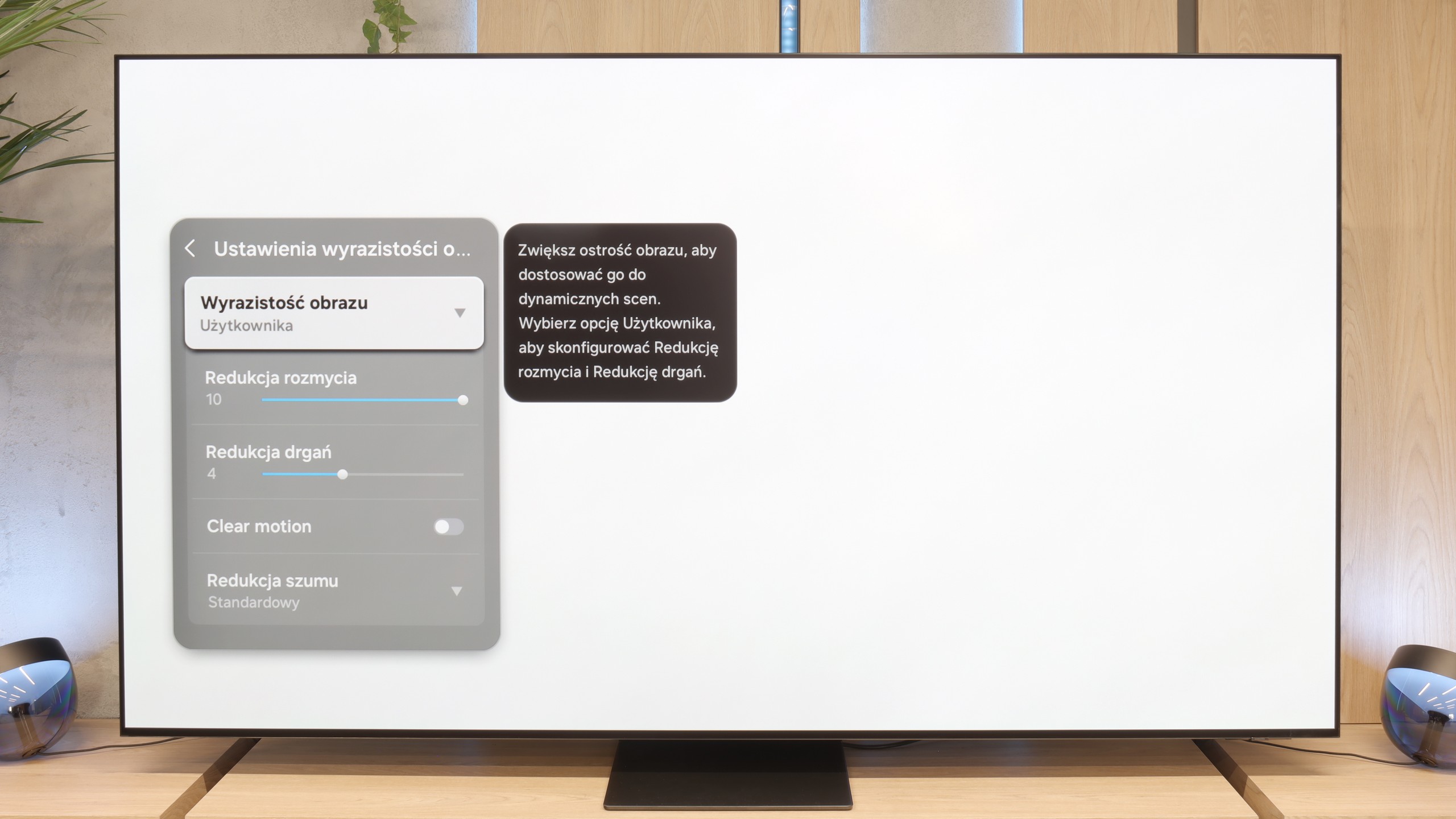
Blur (native resolution, maximum refresh rate):






Blur (BFI function enabled):
Image flickers in this mode



Image flickers in this mode



Smużenie (4K 165Hz):



Smużenie (4K@165Hz):



The motion smoothness on the LG G5 is simply phenomenal. The television is equipped with a panel featuring a 165 Hz refresh rate, and this combined with the instantaneous response time of the OLED matrix delivers incredible results. The image doesn’t judder or blur like on traditional LCD televisions. Like most LG models, the G5 comes with a motion smoother, which can be handy when watching movies – we’re talking about the TruMotion mode, of course. With the “De-Blur” and “De-Judder” sliders, we can adjust the smoothness of older materials according to our own preferences, whether we want to maintain the characteristic film jitter or lean towards a more fluid, television-like effect.
In the case of the 83-inch S95F with a Tandem OLED panel, the fluidity of motion also makes a huge impression. The panel in native 4K resolution offers a refresh rate of 165 Hz, and this combined with organic technology makes games and sport look fantastic. Additionally, the manufacturer has added a motion smoother and a motion blur reduction system, allowing each viewer to customise the picture to their own preferences – whether a more 'choppy', cinematic effect or a smooth, almost theatrical spectacle.
Console compatibility and gaming features
10/10
9.6/10
- ALLM
- VRR
- VRR range40 - 165Hz48 - 165Hz
- Dolby Vision Game Mode
- Correct implementation of HGIG
- 1080p@120Hz
- 1440p@120Hz
- 4K@120Hz
- Game bar
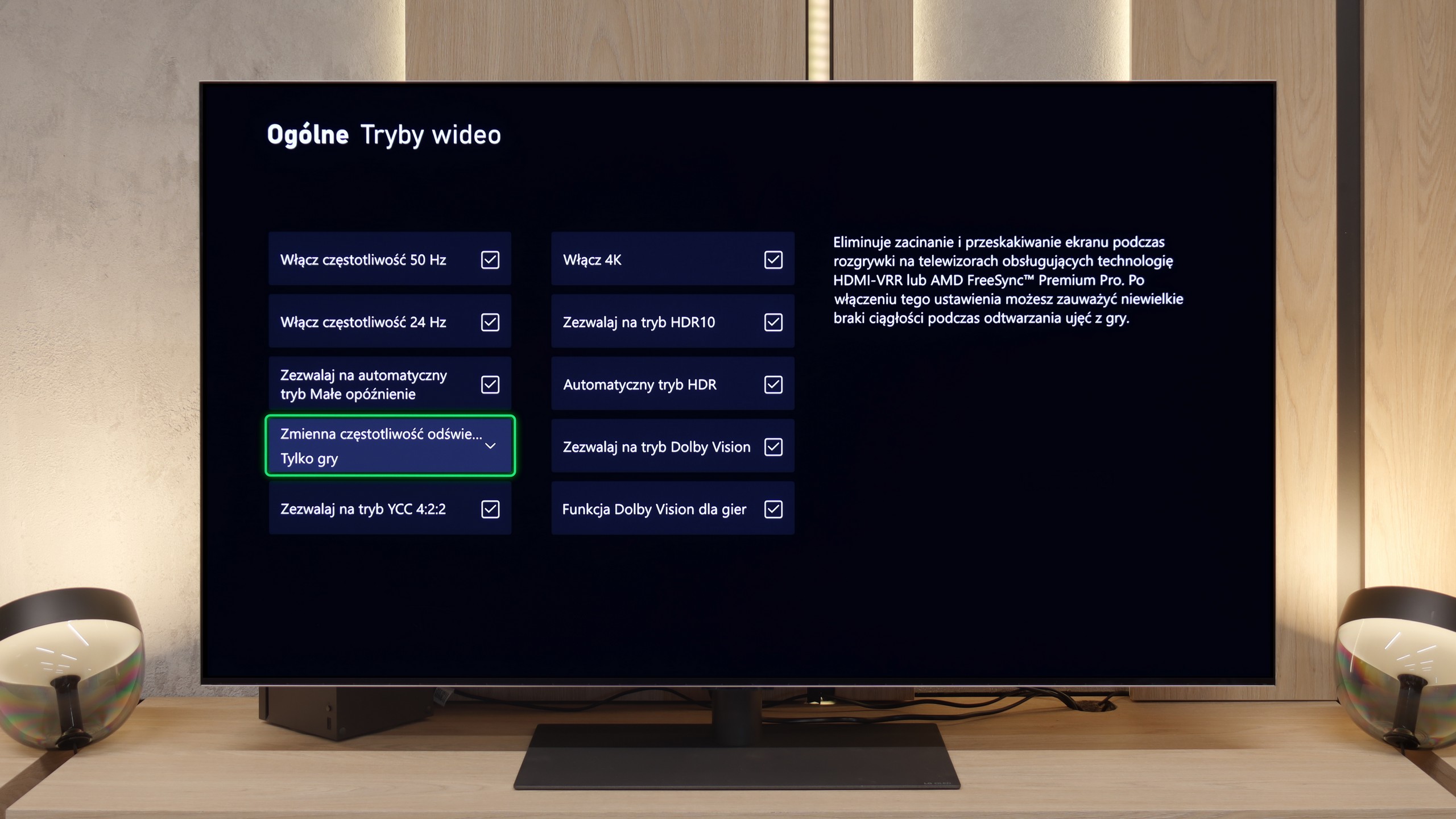
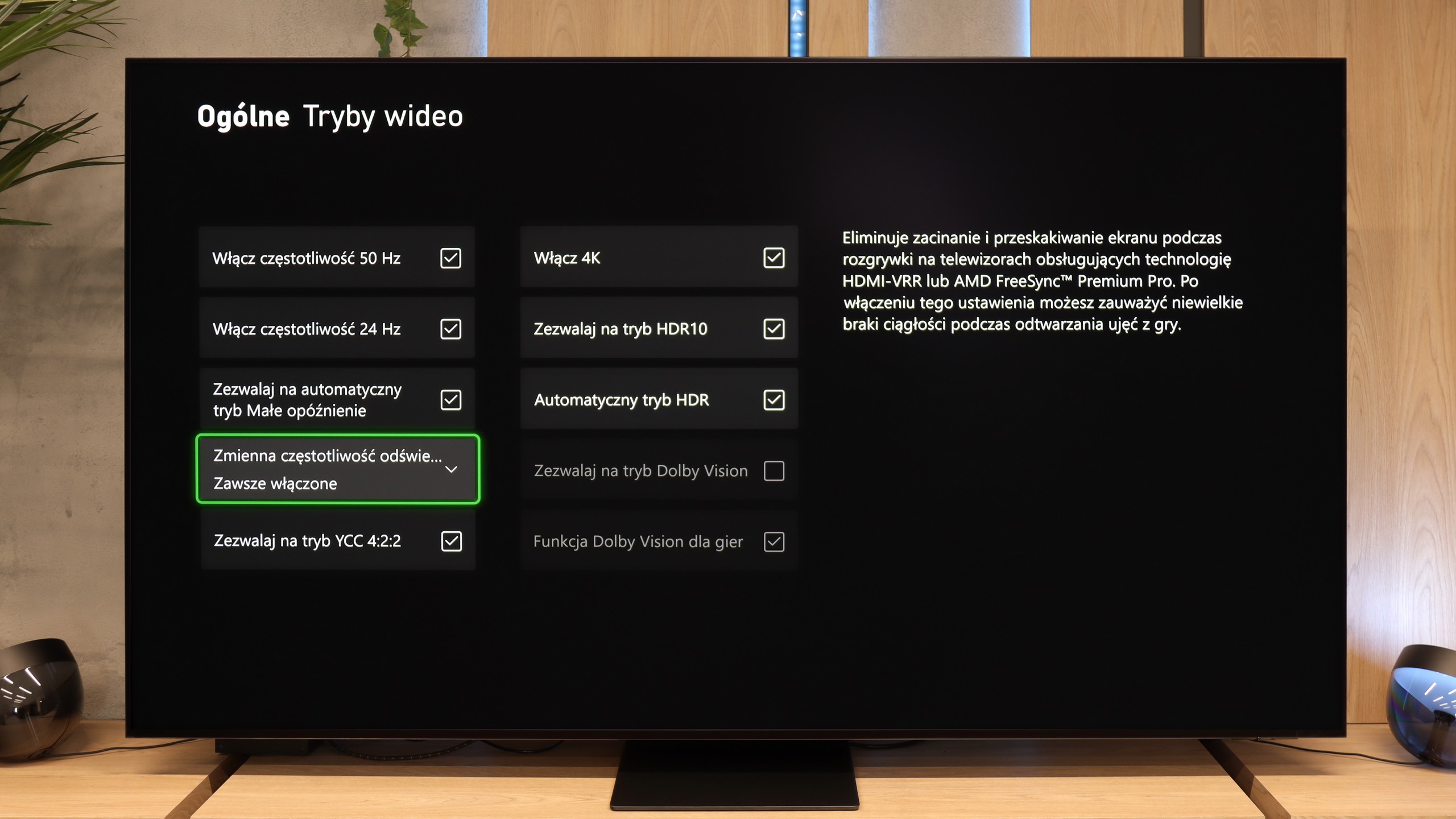
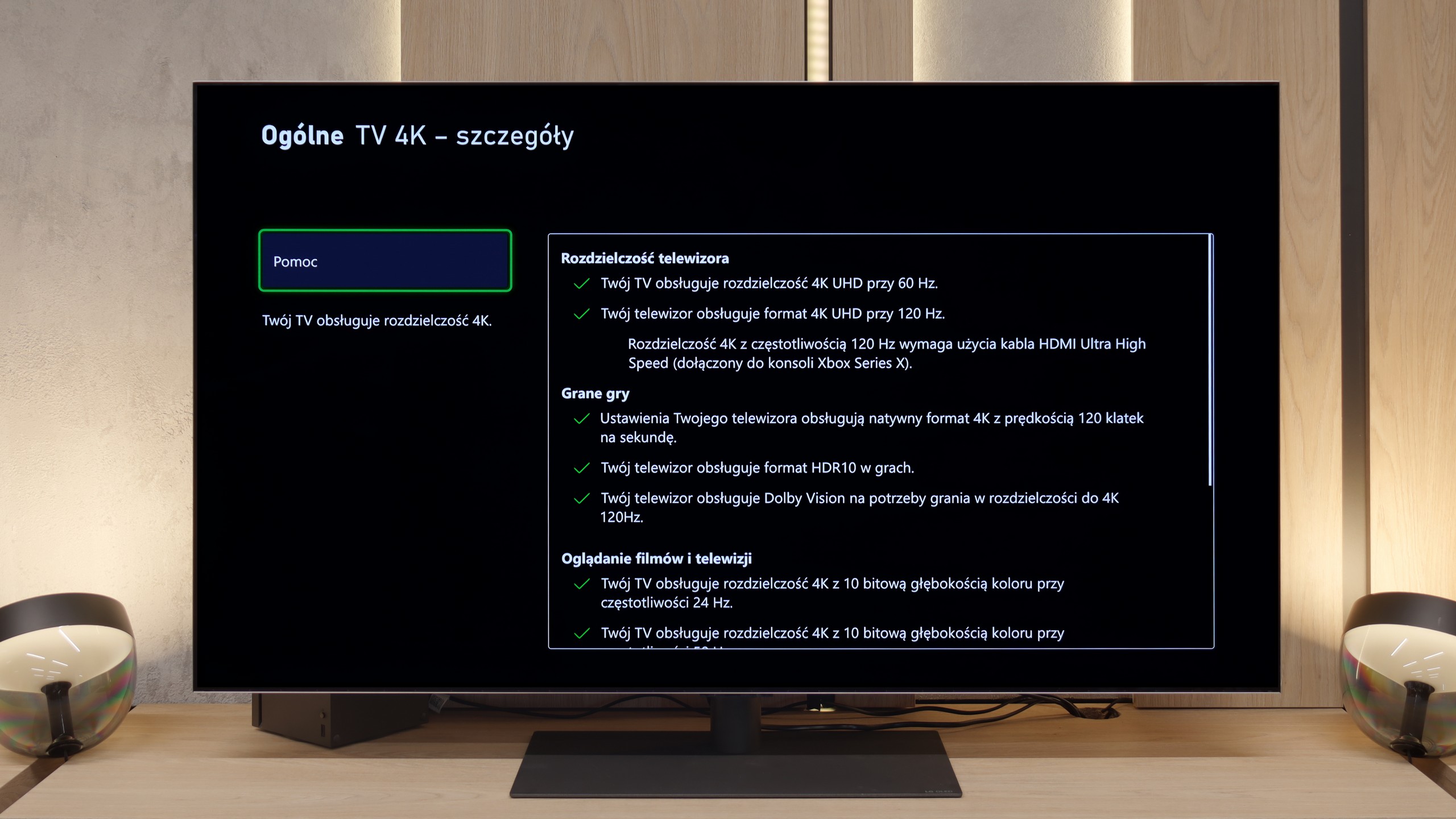
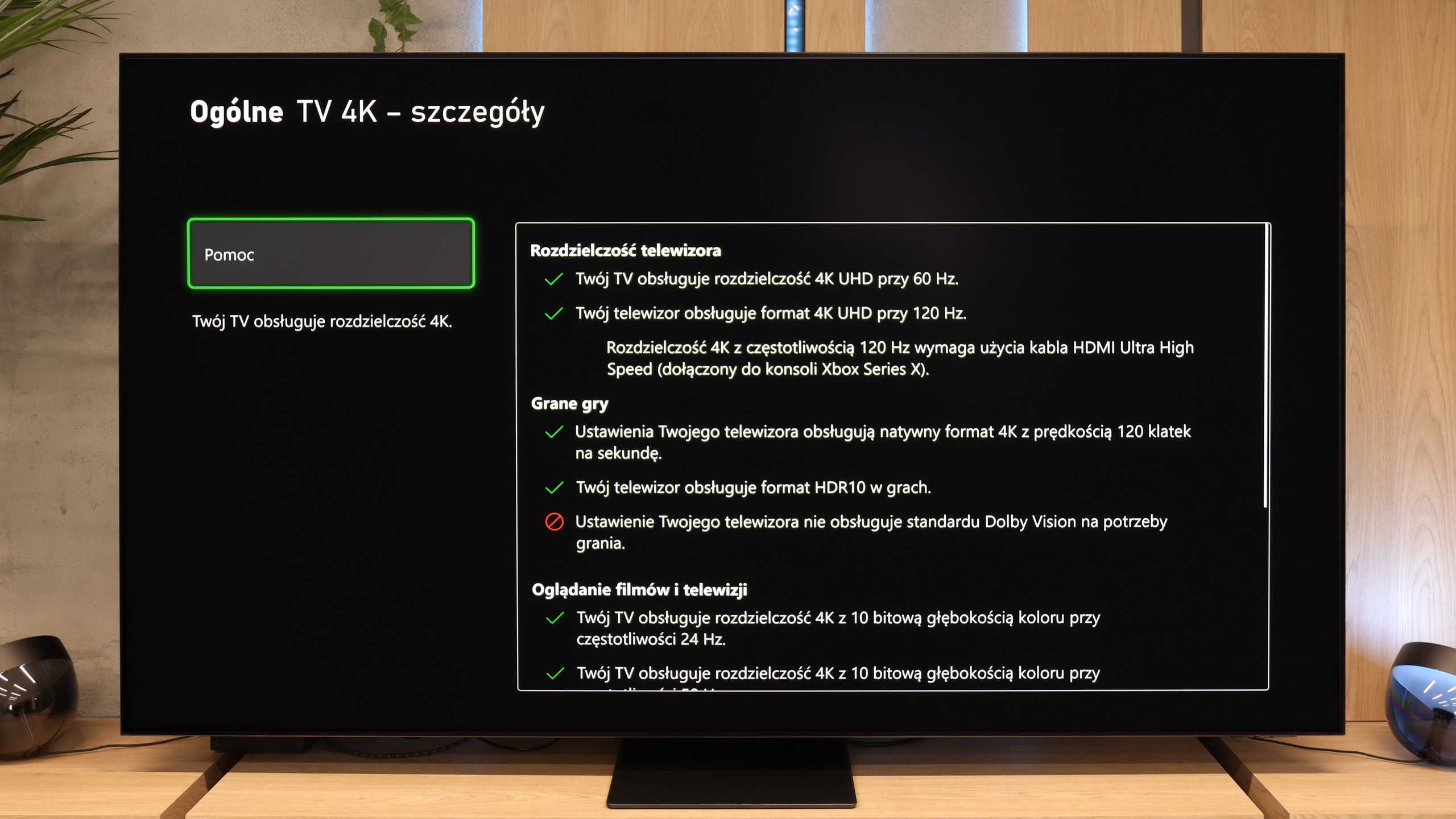
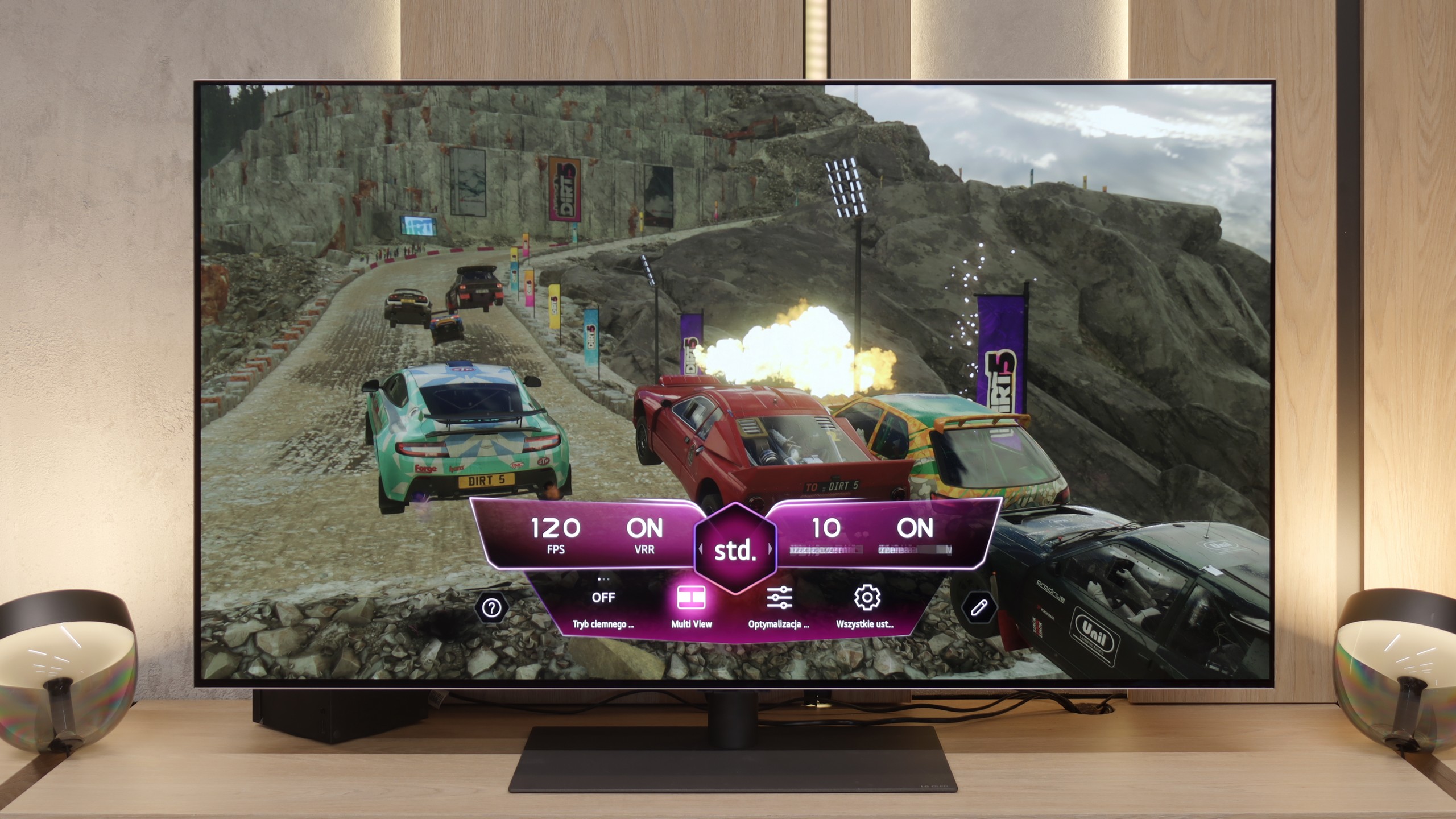
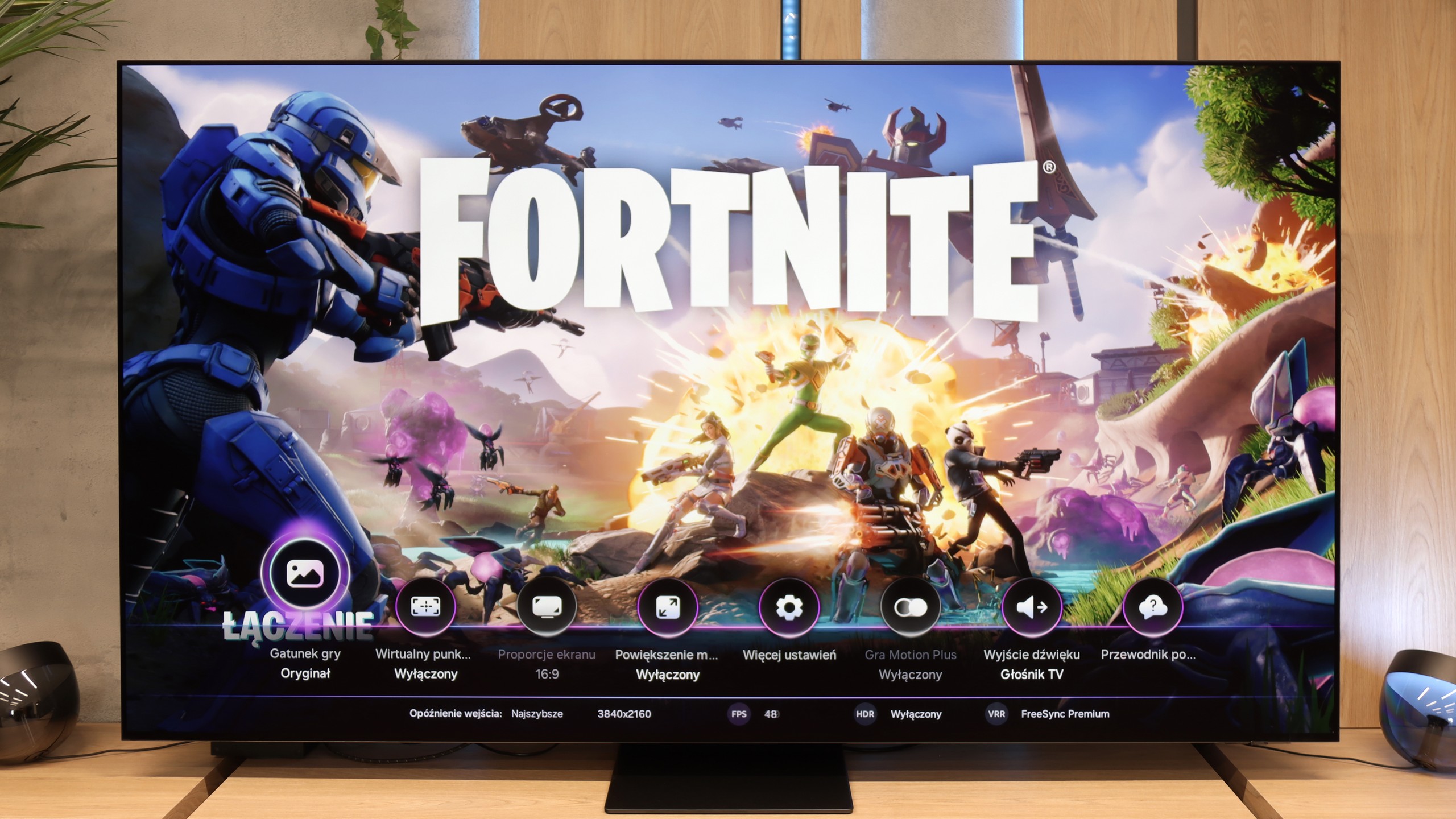
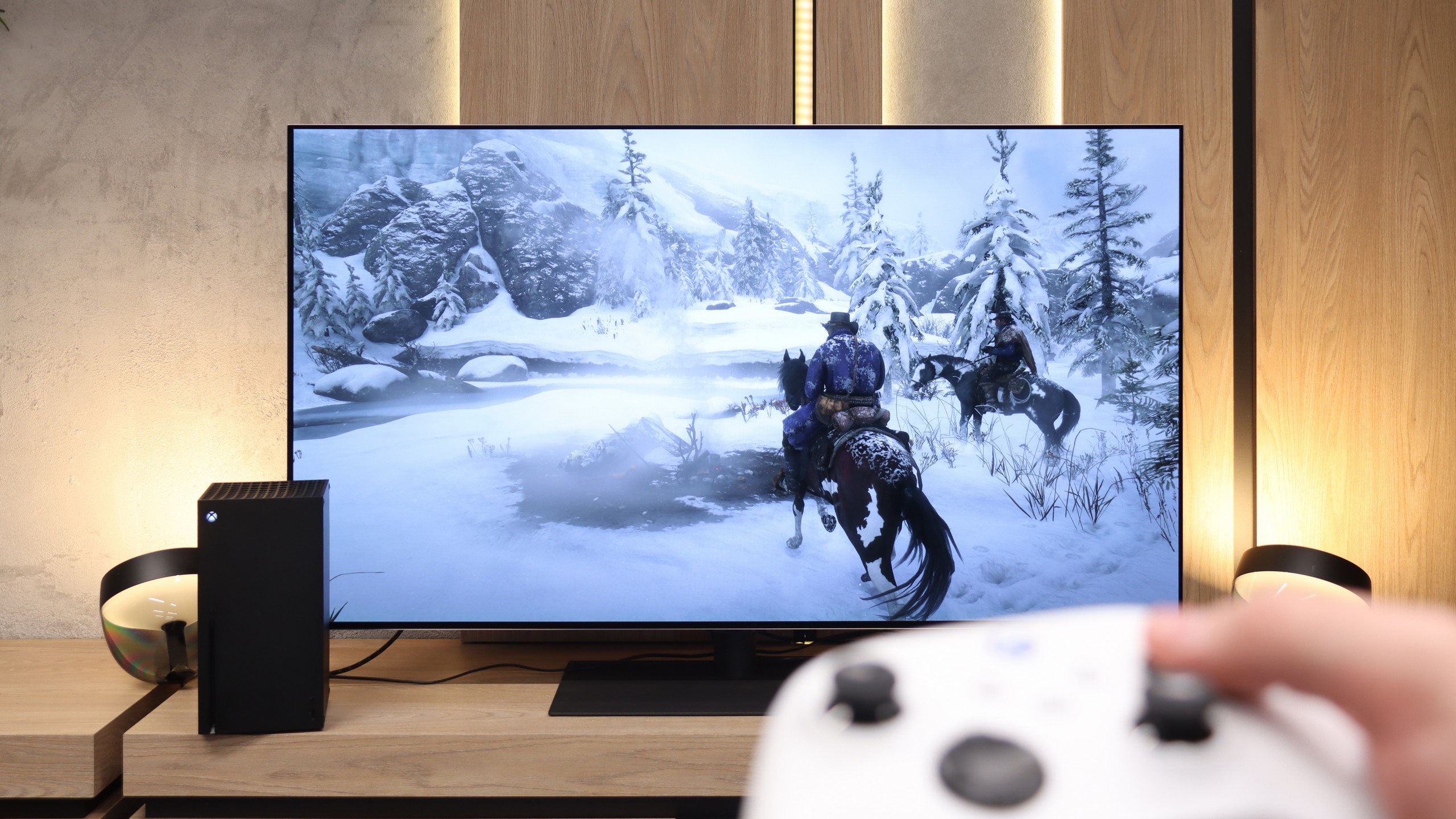
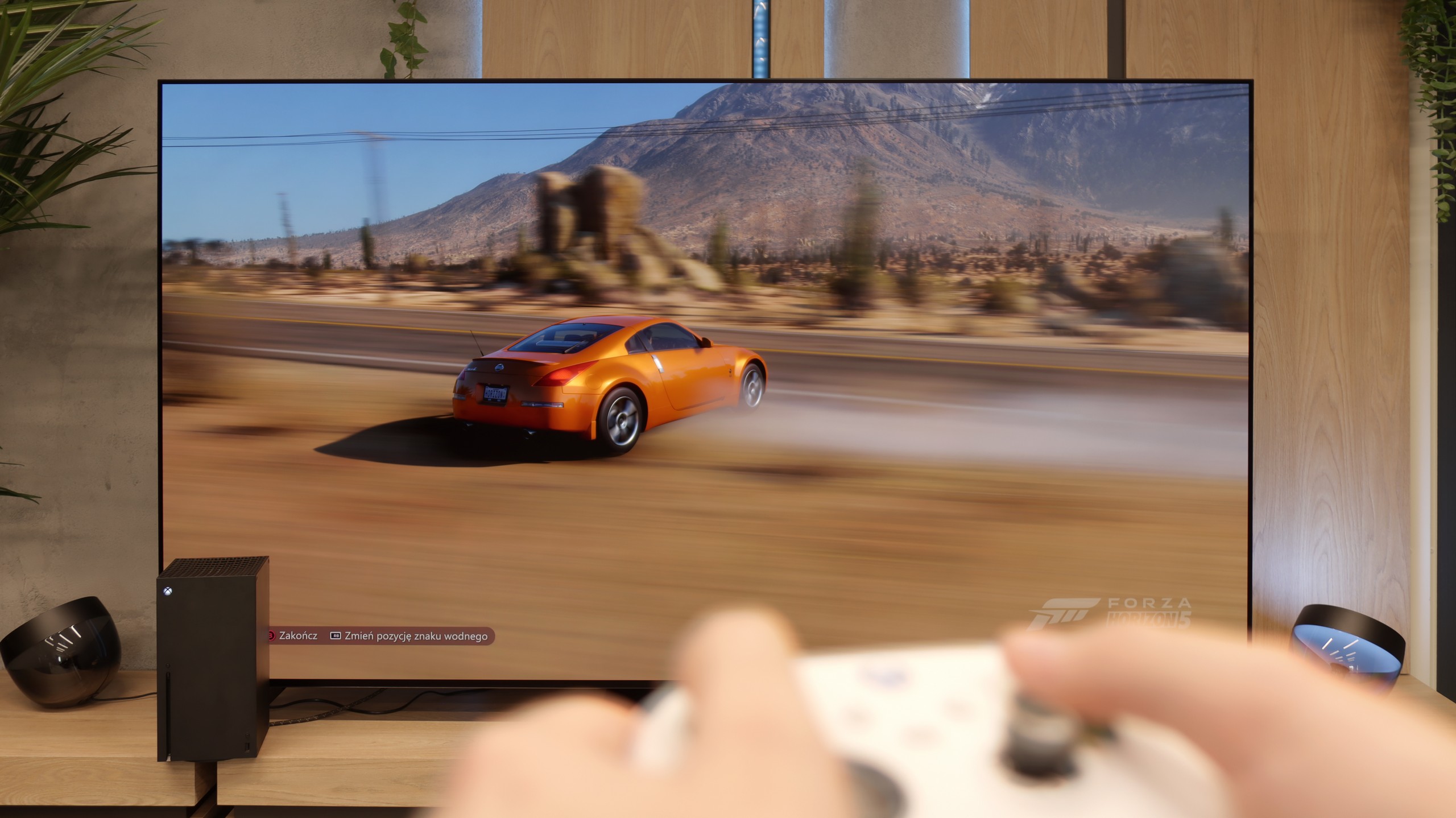
Features for gamers? Perfect. That should be enough for you to know what level we’re dealing with here. The G5 is a TV designed for gamers, so you'll find literally everything you might expect from a gaming screen. There's Game Bar, support for high resolutions with high refresh rates - that is, 4K at 120 Hz, and even more, as the panel has a refresh rate of 165 Hz (which PC gamers will benefit from). The TV supports variable refresh rate (VRR), automatic low latency mode (ALLM), and also properly handles HDR in games thanks to the HGiG feature. All of this adds up to one of the best gaming feature sets available on the market. Well done, LG.
Low motion blur and phenomenal motion fluidity, hallmarks of the OLED panel, are just the warm-up. The Samsung S95F has been designed with gamers in mind – and this is evident at every turn. Four HDMI 2.1 ports with a bandwidth of 40 Gb/s may sound like a compromise on paper, but in practice, neither consoles nor PCs will feel the slightest limitation here. Onboard is a full set of gaming features: variable refresh rate VRR, automatic game mode ALLM, and an excellently implemented HGiG standard, which allows you to enjoy HDR exactly as the creators intended. All this is complemented by Game Bar – an intuitive command centre where you can check and adjust the most important settings in seconds.
Particularly noteworthy is Game Motion Plus, Samsung's proprietary motion smoother. It can add additional fluidity to animations, which can be a lifesaver in games running at 60 frames, where stability doesn't always hold up. Yes, there's no support for Dolby Vision in games, but it's hard to consider this a serious flaw – the manufacturer compensates for this gap with other solutions. The S95F is one of the absolute favourites for the title of the best gaming television on today's market.
Input lag
9.9/10
10/10
SDR
HDR
Dolby Vision
The input lag on the LG G5 is incredibly low. The response time to our actions – whether we're gaming with a controller, keyboard, or mouse – is nearly perfect. The controls are instantaneous, and the game reacts exactly when we expect it to. The Dolby Vision Gaming mode does introduce slightly higher latencies, but even then, it's hard to complain about anything – in the worst case, the values hover around 20 ms, which will still be virtually unnoticeable for most gamers.
Input lag on the Samsung S95F is absolutely top-notch – just 5 ms with 120 Hz content is impressive. The response to our actions on the controller is almost instantaneous, providing a feeling of complete control over the gameplay. Of course, with 60 Hz content, the delay is twice as long, but even 10 ms is hard to complain about – it's still a result that will satisfy both demanding gamers and e-sports perfectionists.
Compatibility with PC
8.8/10
8.8/10
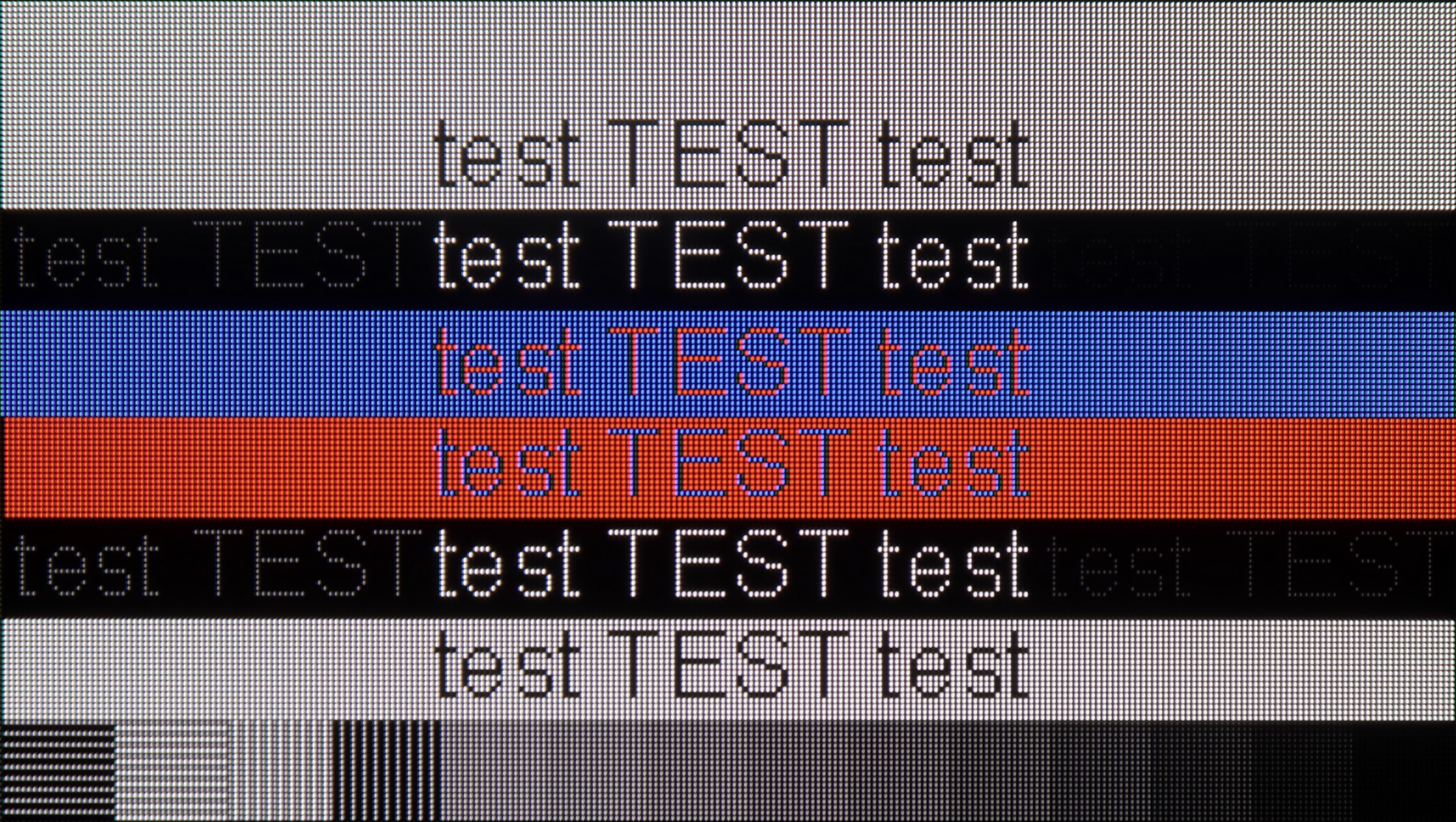
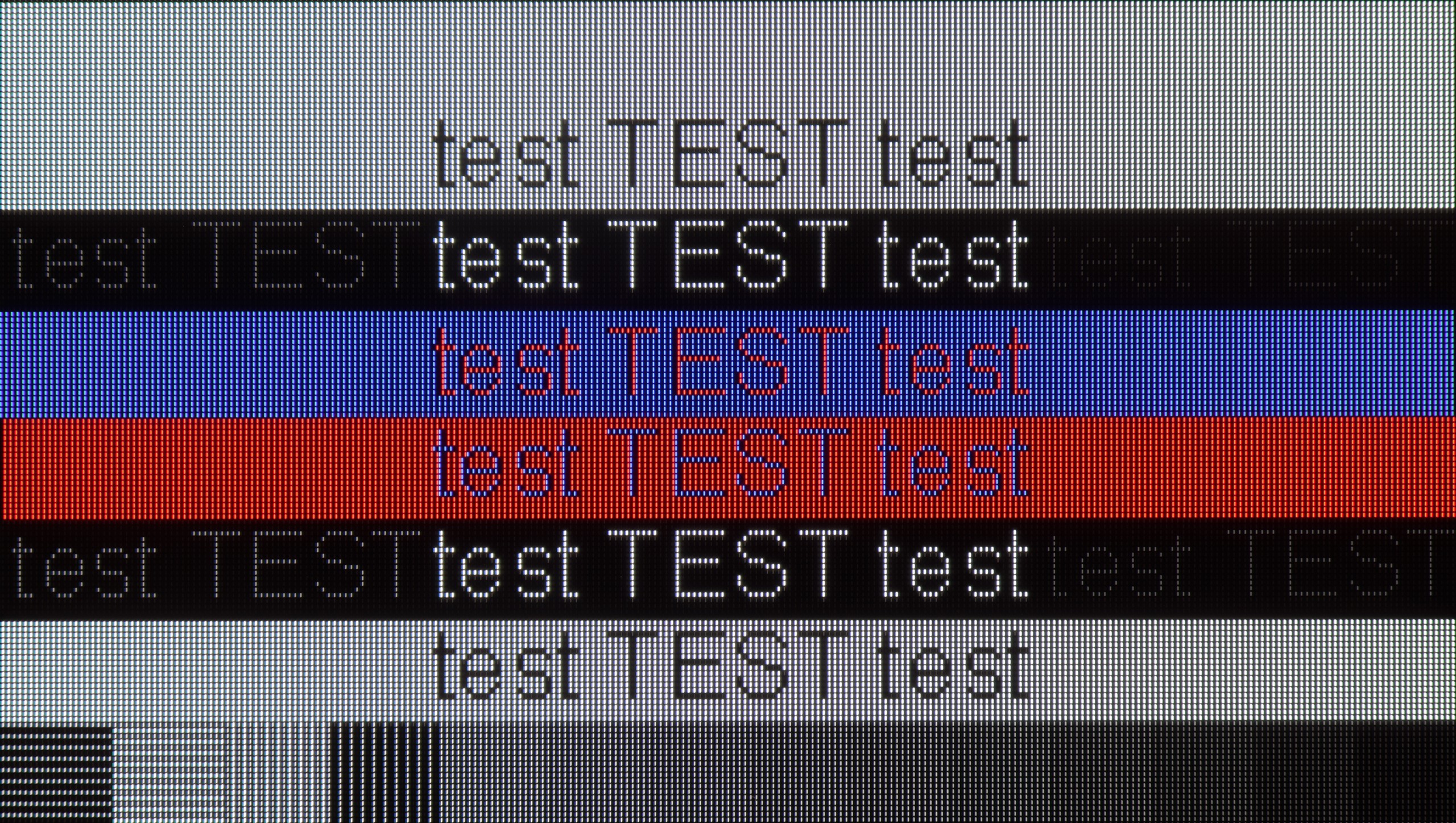
Cooperation with a PC? Almost perfect. The television, as mentioned earlier, has great features for gamers – including those using a PC. Onboard, we find full G-Sync certification, a 165 Hz panel, and super-fast input lag at around 5 ms. Thanks to proper implementation of chroma 4:4:4, fonts are very readable – both the smallest and the largest. Although due to the WRGB subpixel layout, there may be slight shadows around the characters, for most users this effect will be practically unnoticeable. The G5 performs excellently as a screen for work, entertainment, and gaming – also from a computer.
In the version with the WOLED panel, the Samsung S95F also shows its claws – PC gamers have access to a full gaming package with low input lag, support for G-Sync and FreeSync, and fast refresh rates. It’s a device that can easily replace a monitor even in fast-paced titles. When working with text, the differences compared to QD-OLED are subtle but noticeable – the BWGR subpixel layout may give the impression of a slight softening of the edges of letters, as if the text had a gentle shadow. This is not a flaw that ruins the comfort of using a PC, but rather a characteristic resulting from the panel's construction.
Viewing angles
7.5/10
7.6/10
The viewing angles on the LG G5 are very good, primarily due to the use of a WOLED panel. It's hard to find fault here – the picture doesn't significantly lose brightness or quality even when viewed from the side. However, it must be noted honestly that there has been some regression compared to the G4 model. The predecessor used an MLA panel with micro-lenses, which offered slightly better light distribution. Also, compared to QD-OLED panels, the angles are worse. Nevertheless, the overall viewing experience at an angle remains very good and shouldn't be an issue for everyday use.
In the version with the WOLED matrix, the viewing angles are good and absolutely sufficient for everyday watching. The fact is that the QD-OLED panel performs better in this regard, and with a strong offset, there is a slight color shift, but this is not something that interferes with a normal viewing session. Sitting on the couch – whether in the middle or a bit to the side – the picture still looks very good and most viewers will be fully satisfied.
TV efficiency during daytime
8/10
7.7/10
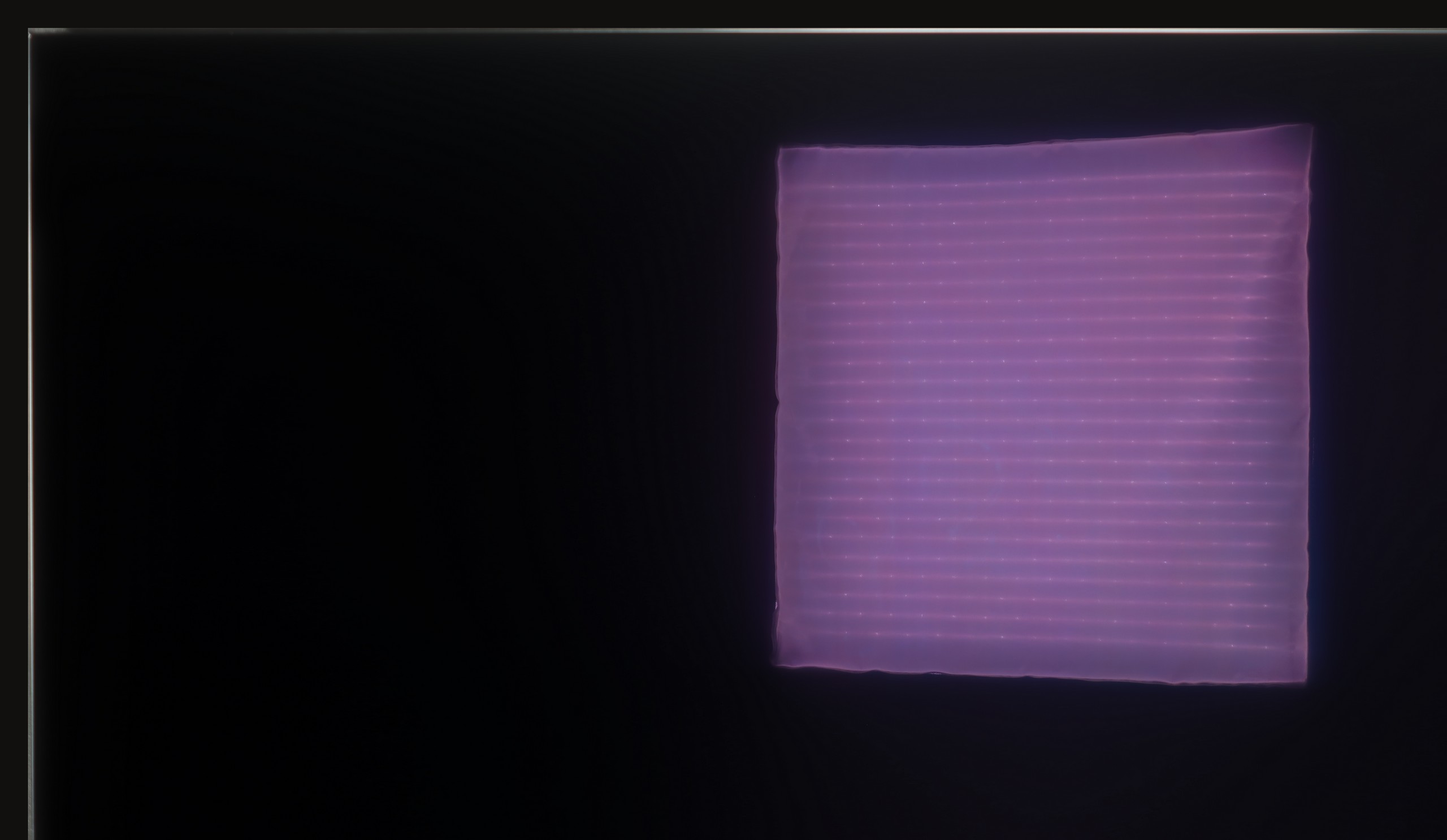
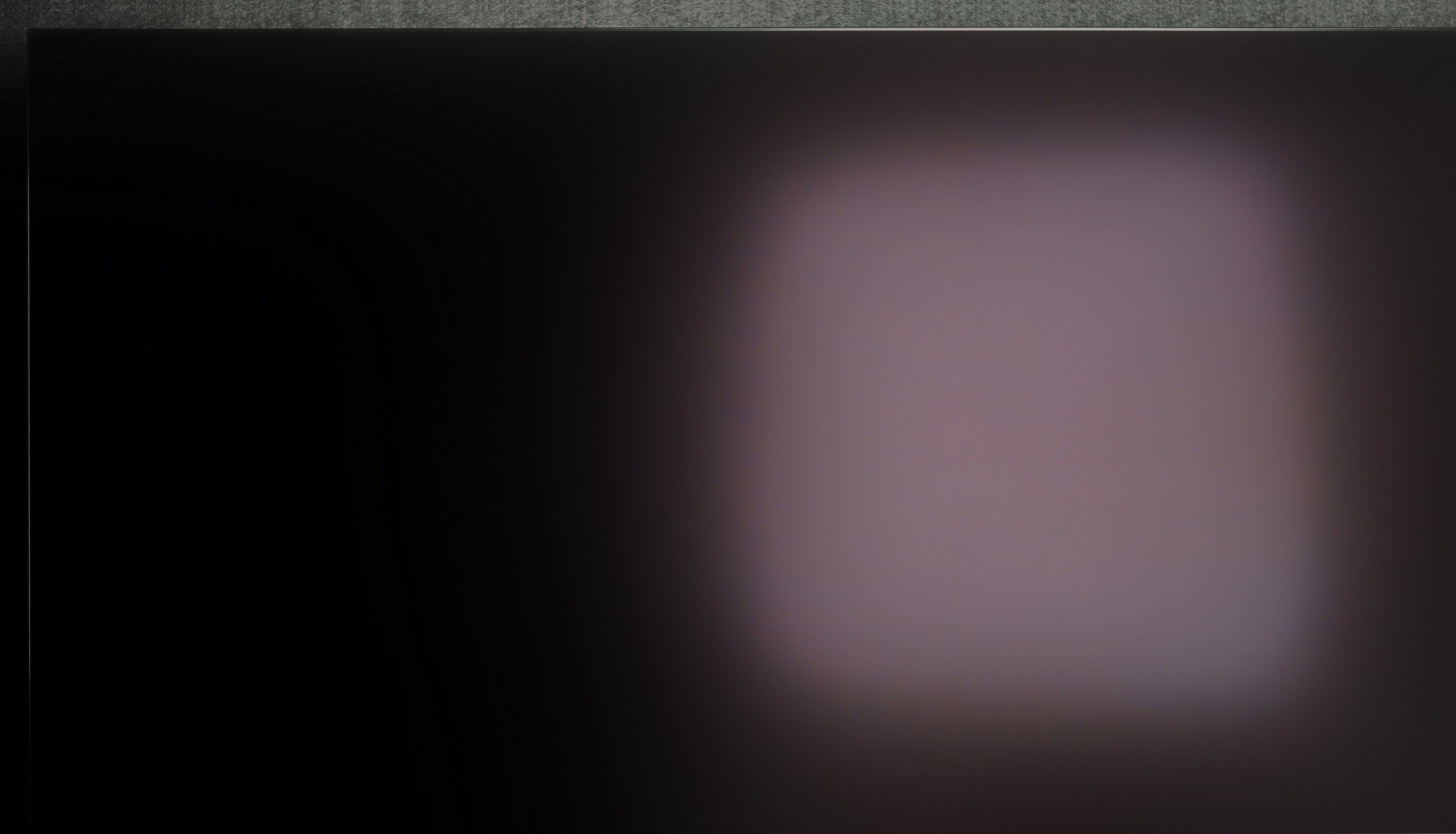


Matrix brightness
Average luminance SDR
SAMSUNG S95F (TANDEM OLED 83"): 704 cd/m2
LG OLED G5: 810 cd/m2
LG G5, with its very high brightness, performs excellently in bright rooms. Even with SDR content, the average brightness is around 800 nits, significantly more than standard televisions. It will handle a bright living room with ease. Although the panel moderately reduces reflections, it still maintains much better blacks and colours during the day than QD-OLED panels or those with a matte finish. The G5 will work effortlessly in very sunny rooms – unless you really can’t stand reflections on the screen. In that case, you’ll need to use blinds or consider purchasing a television with a matte panel.
This is probably the first television in the world where two worlds meet – a matte finish from Samsung and a WOLED panel from LG Display. And it must be said that such a duo makes a stunning impression. Light reflections practically disappear, and the image retains its naturalness – colours remain saturated, and black doesn’t wash out like in QD-OLED. It sounds almost like an industry joke, but it turns out that the combination of technology from two rivals has produced a result better than anyone could have expected. Additionally, the panel's brightness, hovering around 700 nits, means that the television performs excellently even in difficult, daytime conditions.
Details about the matrix
Subpixel Structure:
Panel uniformity and thermal imaging:

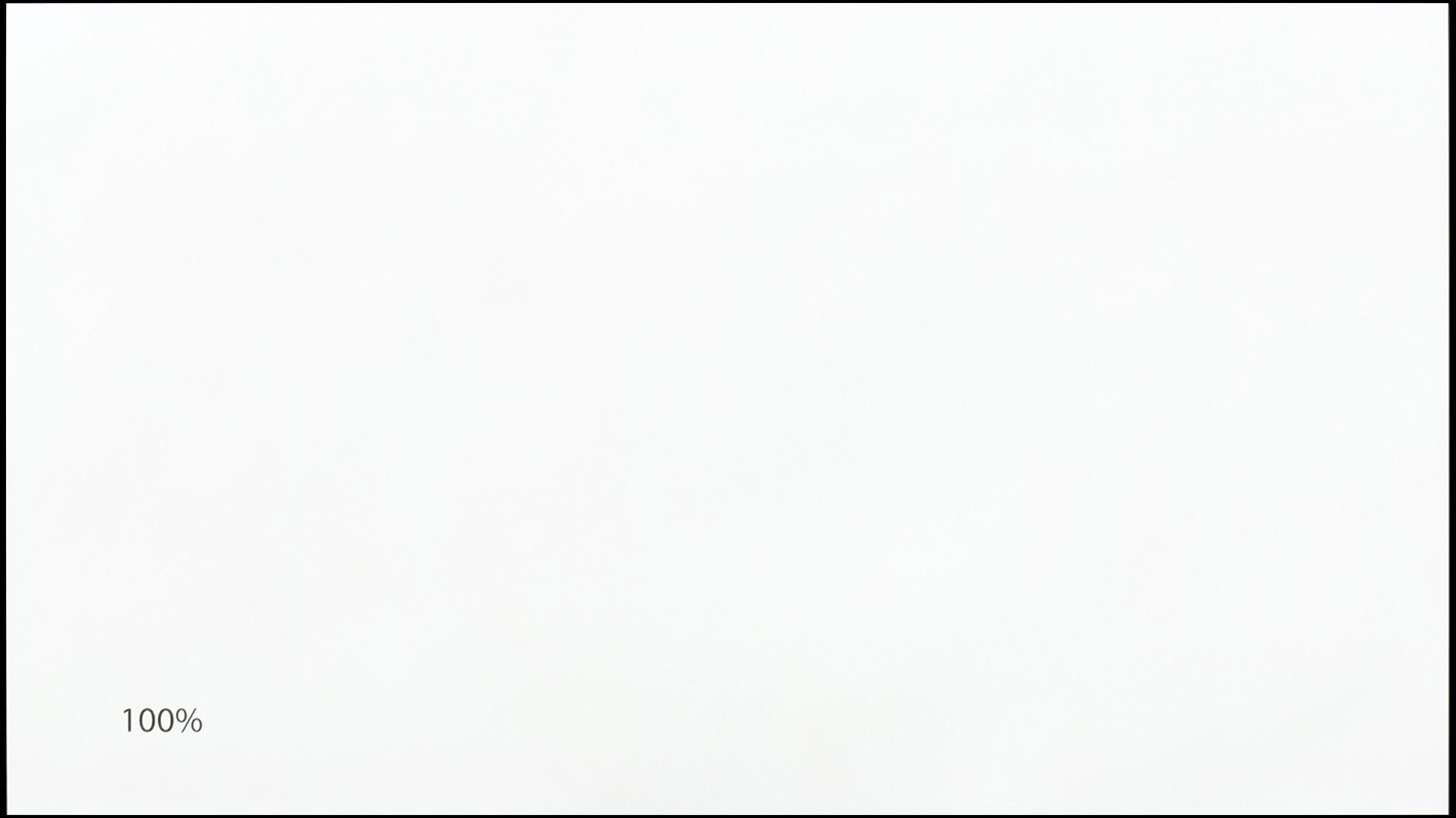
TV features
8.5/10
7.9/10
- HDMI inputs0 x HDMI 2.0, 4 x HDMI 2.1 48Gbps0 x HDMI 2.0, 4 x HDMI 2.1 40Gbps
- Other inputsIR (remote)
- OutputsToslink (Optical audio), eARC (HDMI), ARC (HDMI)Toslink (Optical audio), eARC (HDMI), ARC (HDMI)
- Network InterfacesWi-Fi 2.4GHz, Wi-Fi 5GHz, Ethernet (LAN) 100MbpsWi-Fi 2.4GHz, Wi-Fi 5GHz, Ethernet (LAN) 100Mbps
- TV receptionDVB-T, DVB-T2, DVB-S, DVB-S2, DVB-CDVB-T, DVB-T2, DVB-S, DVB-S2, DVB-C
Classic features:
- Recording to USB (terrestrial TV)
- Recording programming
- Picture in Picture (PiP)
- RF remote control (no need to aim at the screen)
- Backlit remote control
- Teletext
- Audio only mode
- Bluetooth headphones support
- Simultaneous Bluetooth headphones & TV audio
Smart features:
- AirPlay
- Screen mirroring (Windows Miracast)
- Voice search
- Voice search in native language
- Ability to connect a keyboard and mouse
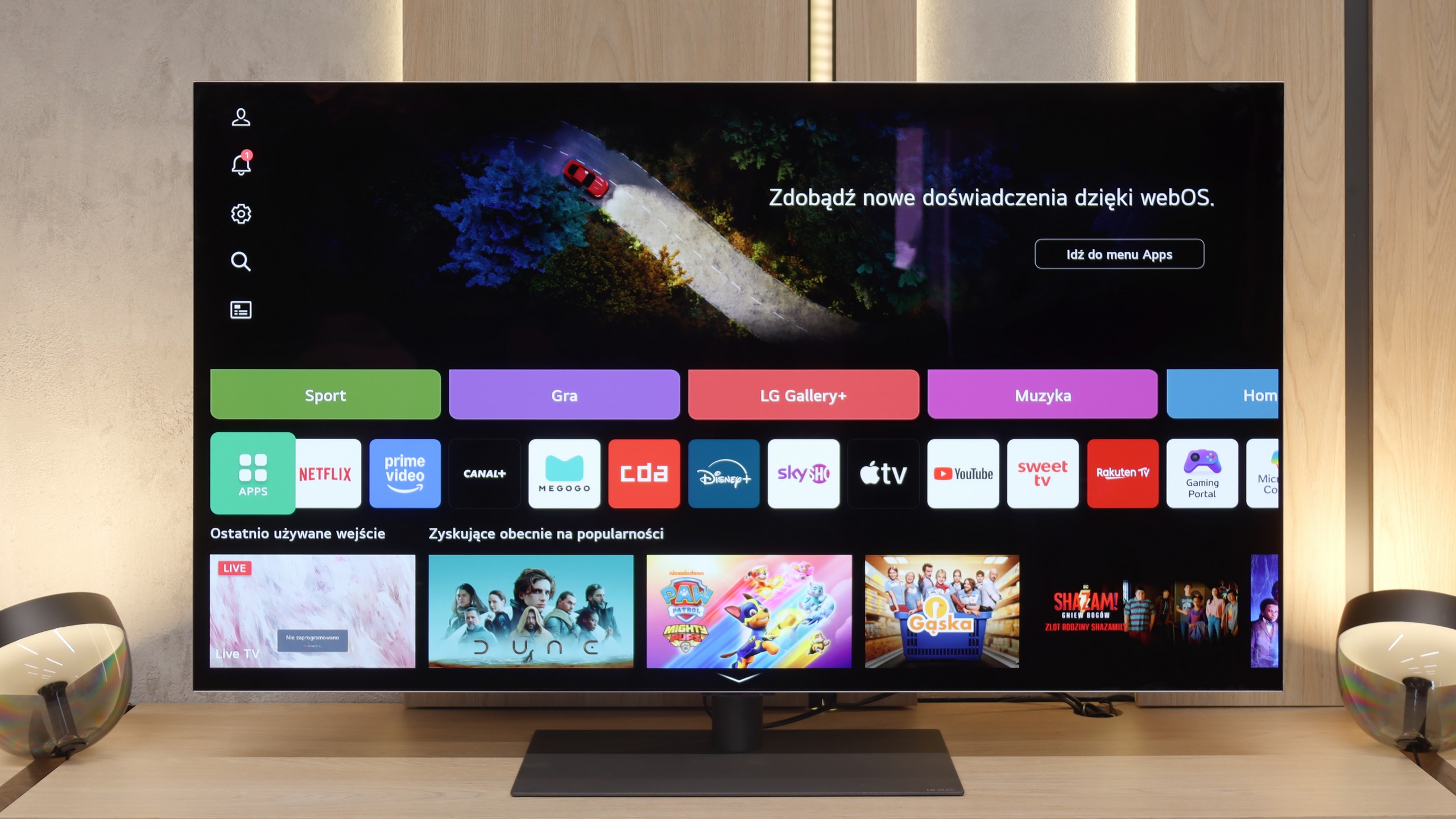
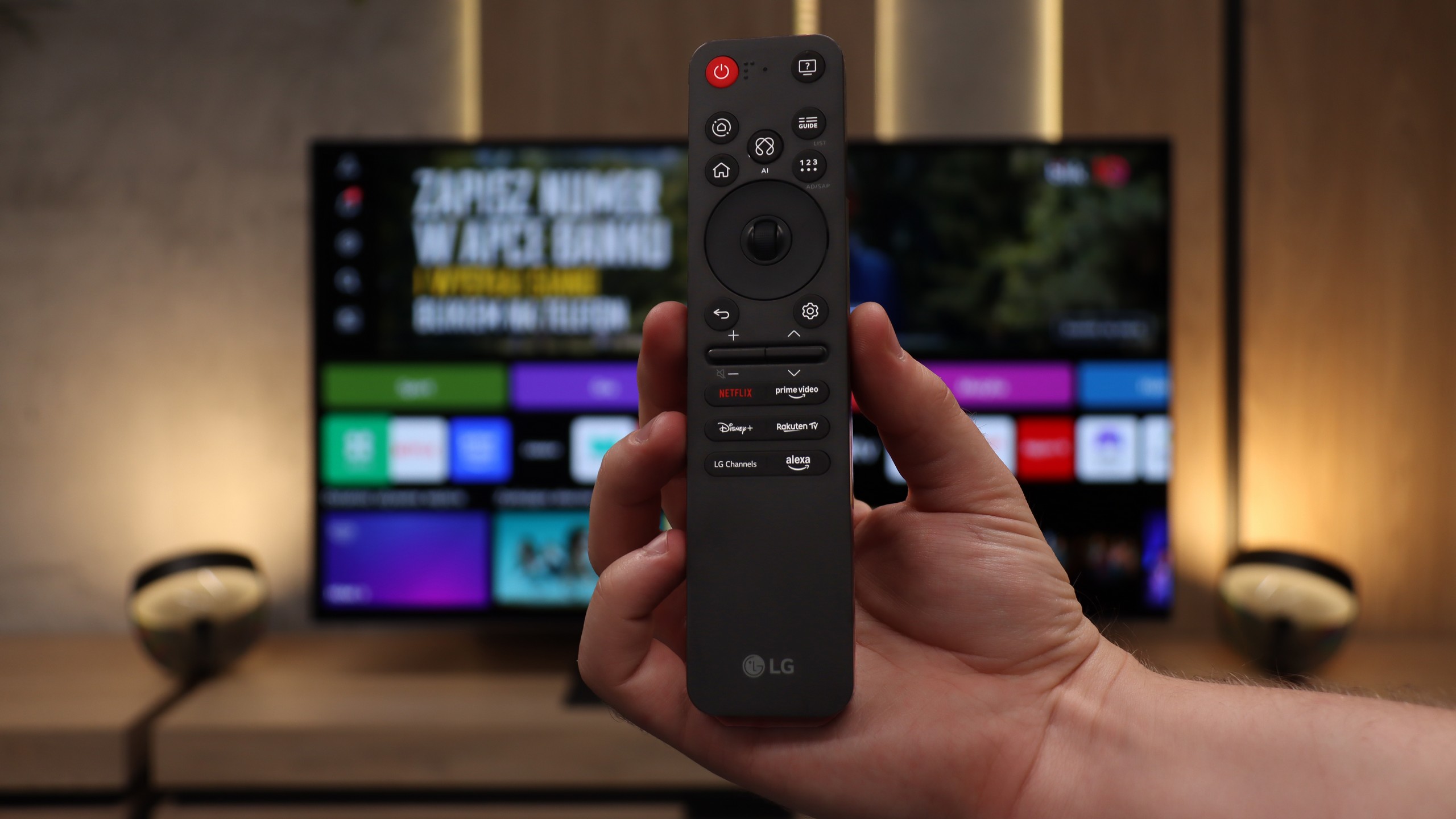

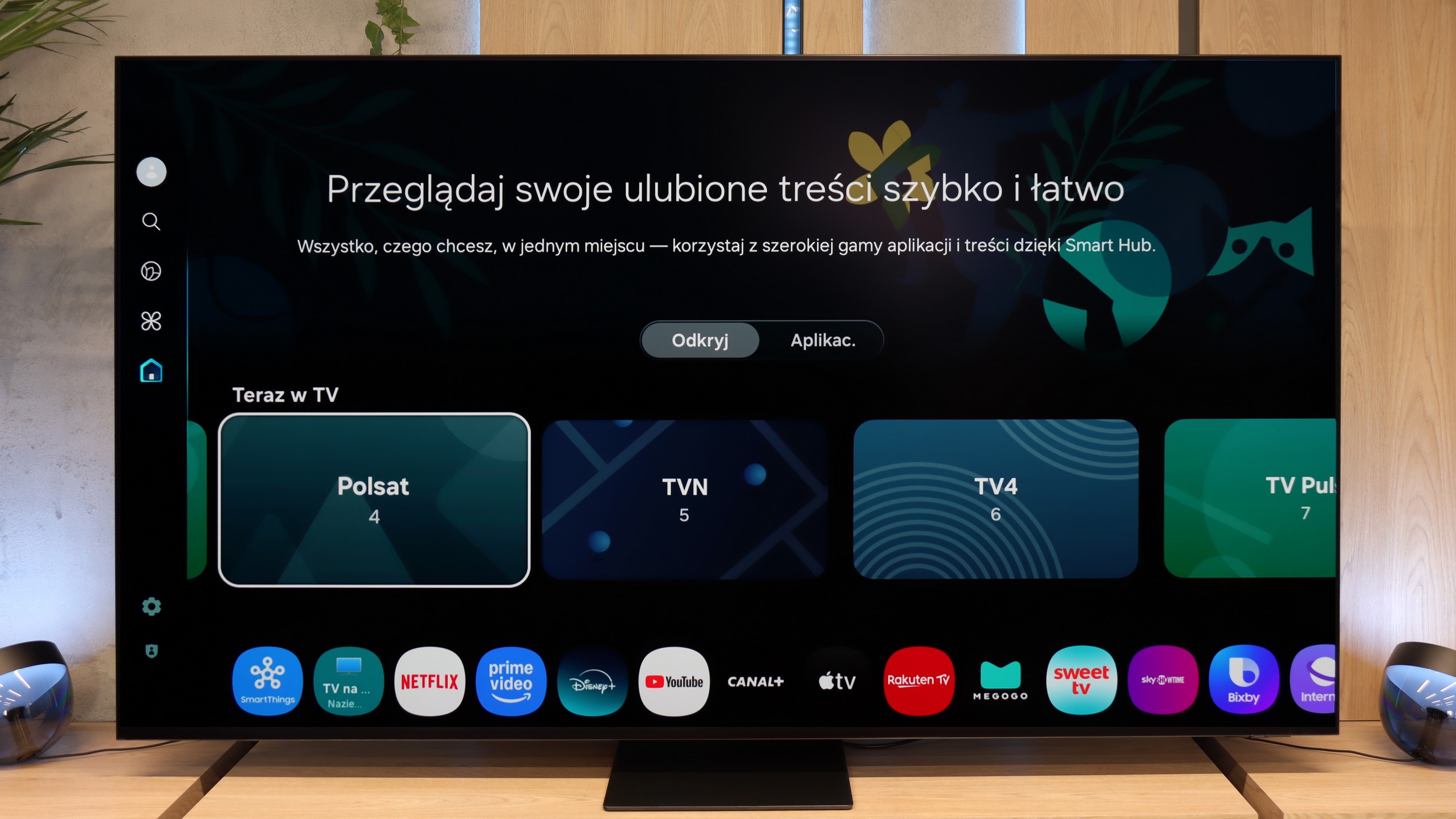
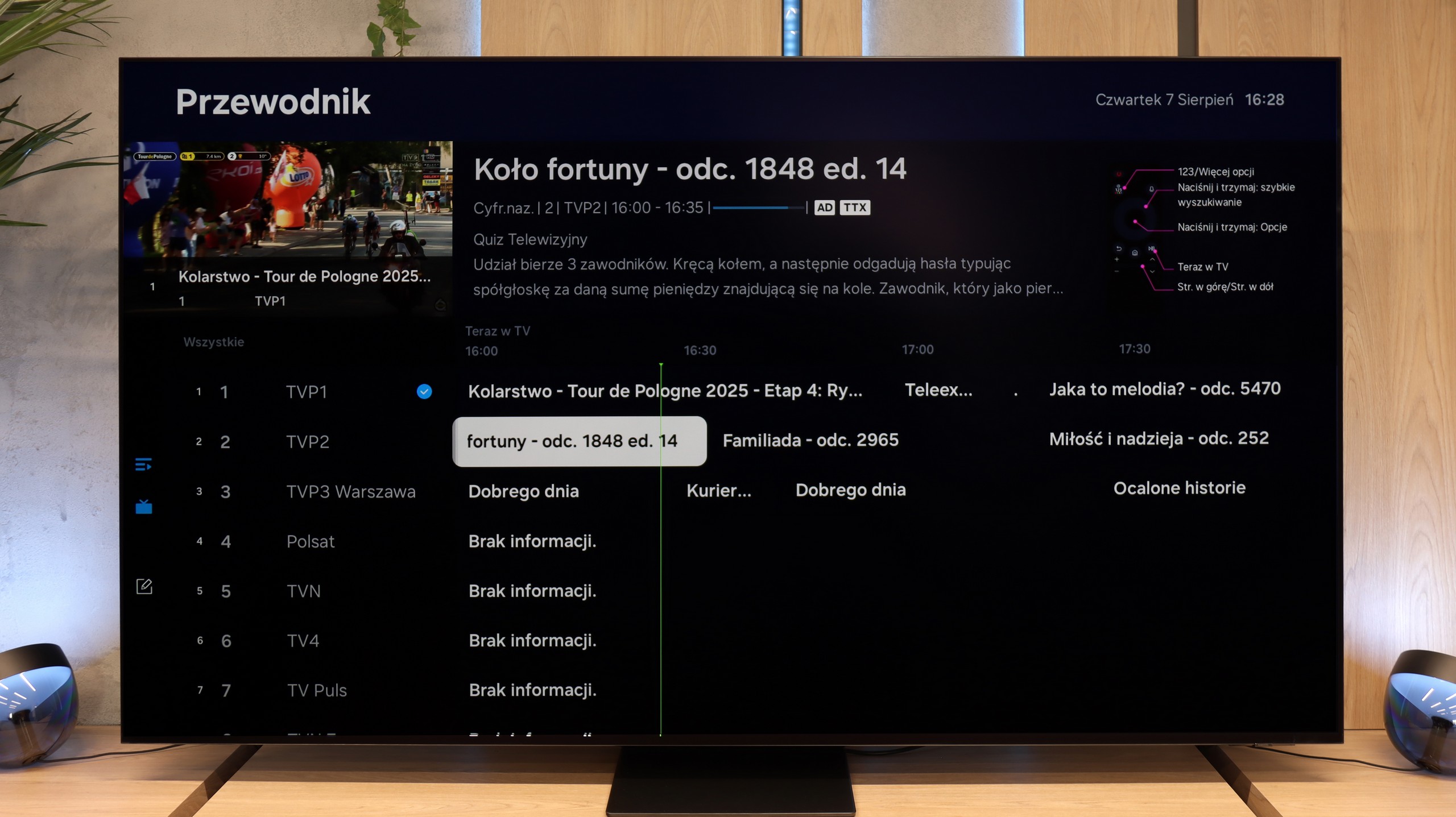
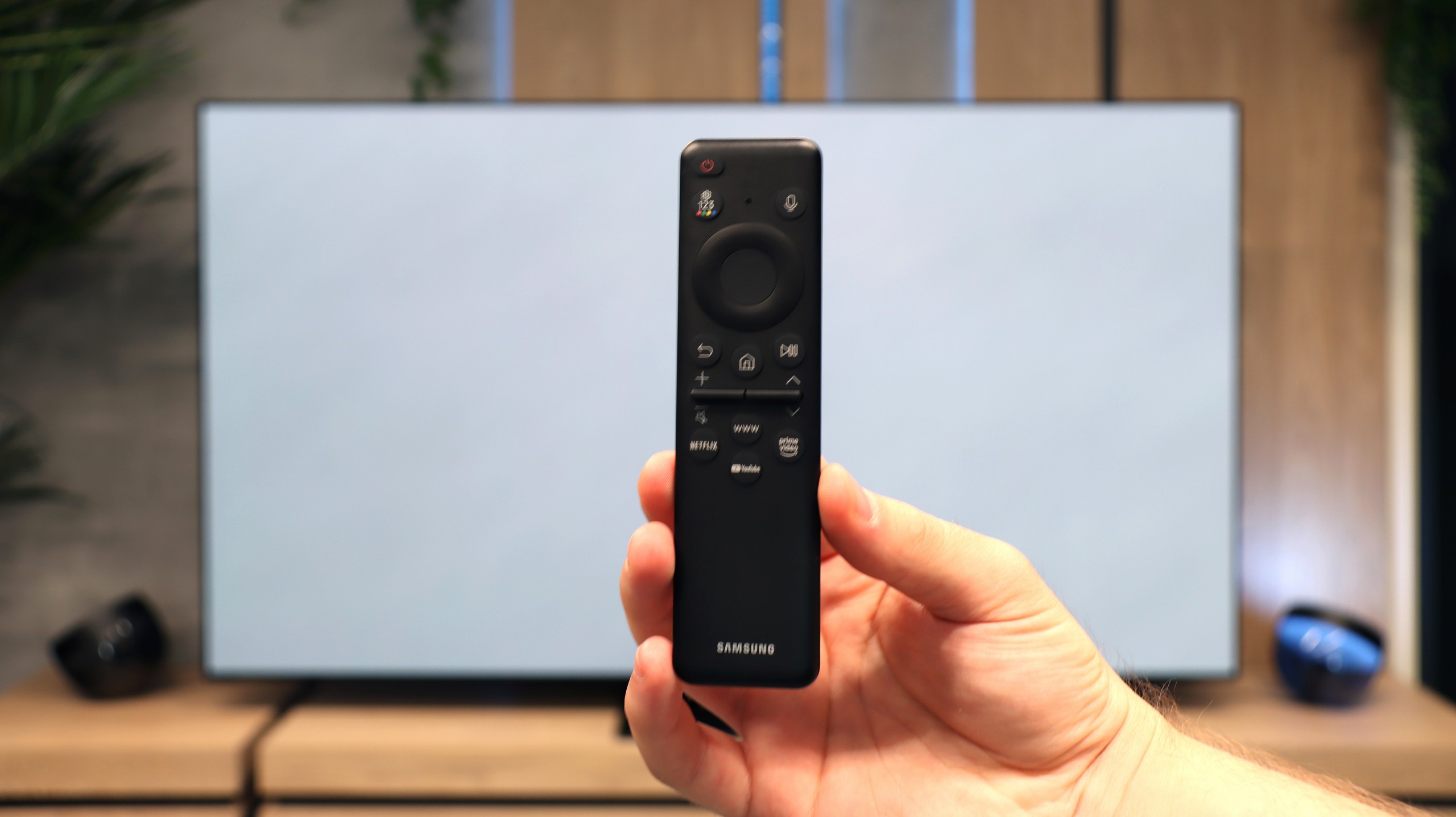
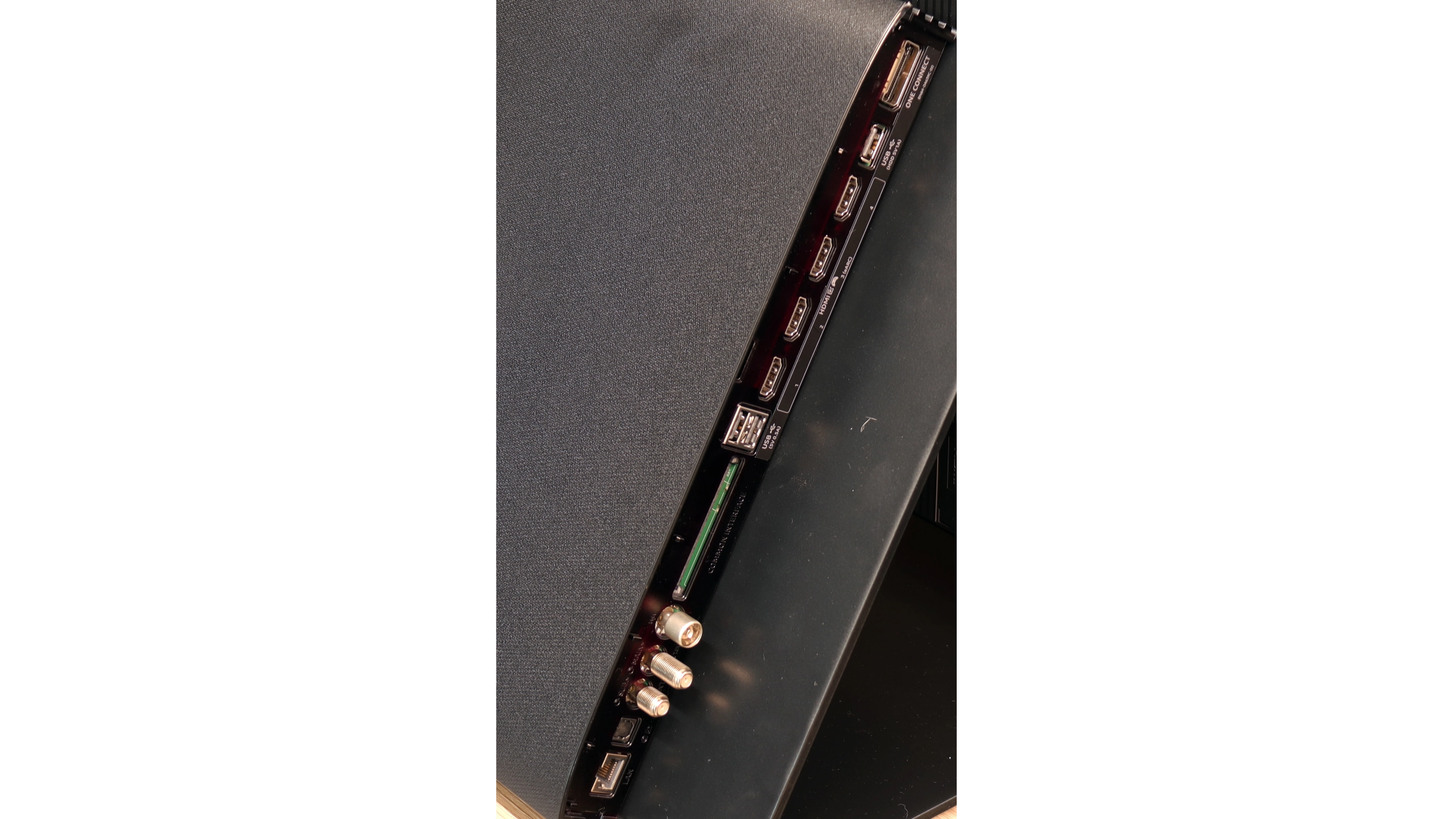
Classic Features
LG G5 has a lot to offer when it comes to classic television features. Apart from the lack of the ability to watch two sources (PIP), the TV performs excellently for everyday use. There are no issues with connecting external Bluetooth devices like headphones, and the EPG interface is very clear and understandable – even for those who are not particularly tech-savvy.
Smart TV Features
The Smart TV in the G5 operates on the WebOS system – it is the heart and brain of the entire television. With the Magic remote, using the G5 is truly enjoyable. We control the cursor on the screen with wrist movements, which resembles using a mouse in the air. The system itself is very sophisticated and offers everything one could expect: AirPlay, screen mirroring, voice search, and voice commands – all of which work smoothly and without delays. There’s no doubt it’s one of the best operating systems in TVs on the market.
Note:
During our tests, we had almost nothing to complain about – maybe aside from one exception: the confusion surrounding the remote. Depending on the market and the specific version of the model, you may encounter the new, minimalist Magic remote (without a numeric keypad), or the older version with a full set of buttons. We tested the G54LW model, which had the new Magic remote, but it’s hard to say how the situation looks in other variants. It may be a similar situation to the LG C5 series, where the remote attachment also depends on the specific market.
SmartTV in S95F: Tizen
Samsung S95F is not just a screen for movies and games, but also a well-developed smart platform. The Tizen system runs quickly and efficiently – it's hard to encounter stuttering or serious issues. On a daily basis, we have everything we need: AirPlay, screen sharing from a smartphone, voice search (working even without a remote in hand). It’s a closed system, so we won’t find every app available on Android, but the library is rich enough that no one will feel shortchanged. Additionally, there’s SmartThings, which integrates with smart home devices, allowing the television to be more than just a display.
Classic Features of S95F
A pleasant surprise is the presence of features that are sometimes overlooked in this category of equipment – PiP, teletext, and the ability to connect headphones via Bluetooth. The only thing missing is USB recording from the built-in DVB-T/T2 tuners, but Samsung makes up for this with a great remote (small) that can easily control other devices, including the Canal+ decoder. The One Connect module also deserves praise – having all the ports hidden in a separate box is a huge convenience, especially for those who frequently juggle connected devices. It’s hard to pinpoint any element that could lead to complaints.
Playing files from USB
9/10
9/10
Supported photo formats:
Maximum photo resolution:
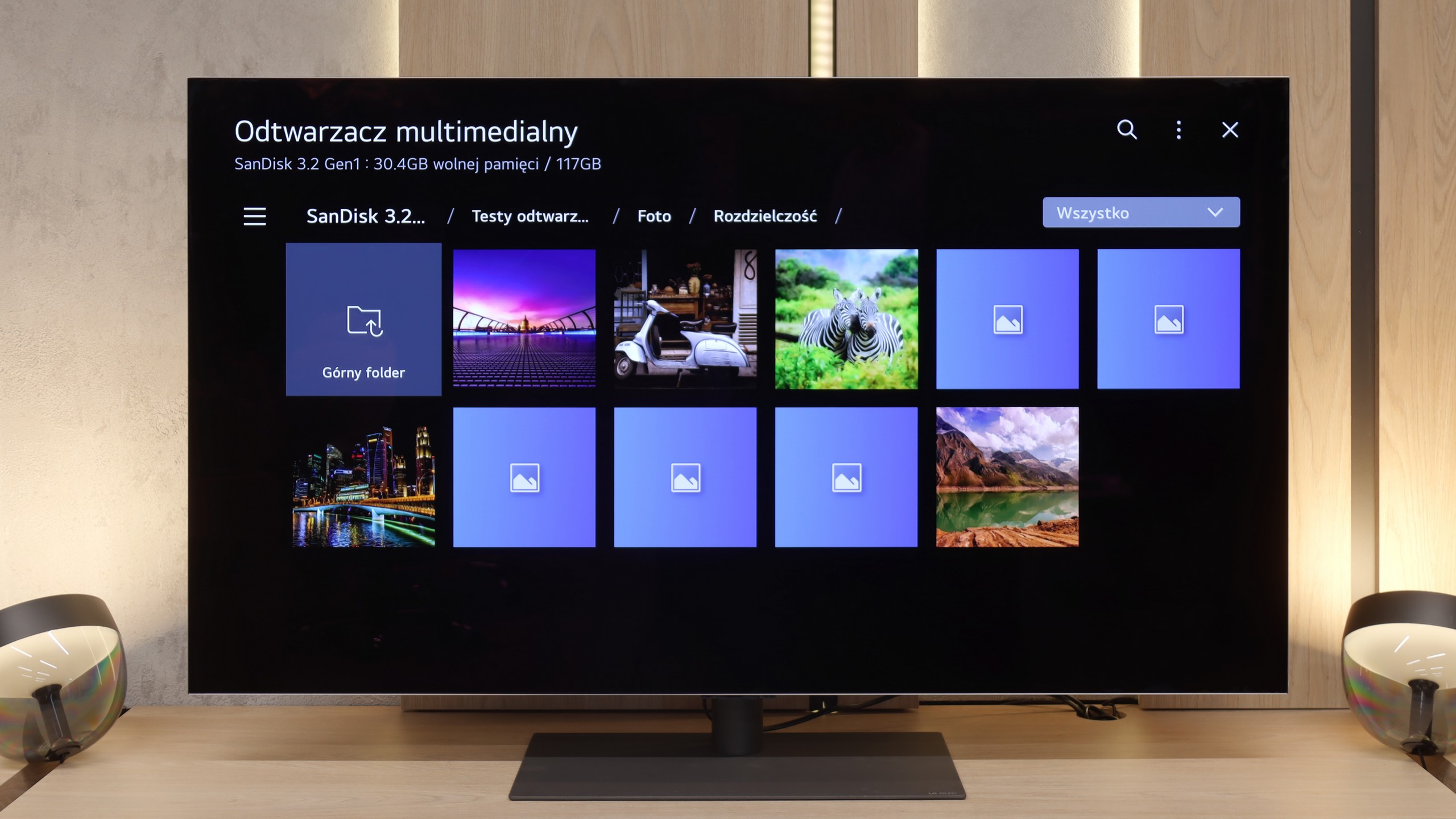
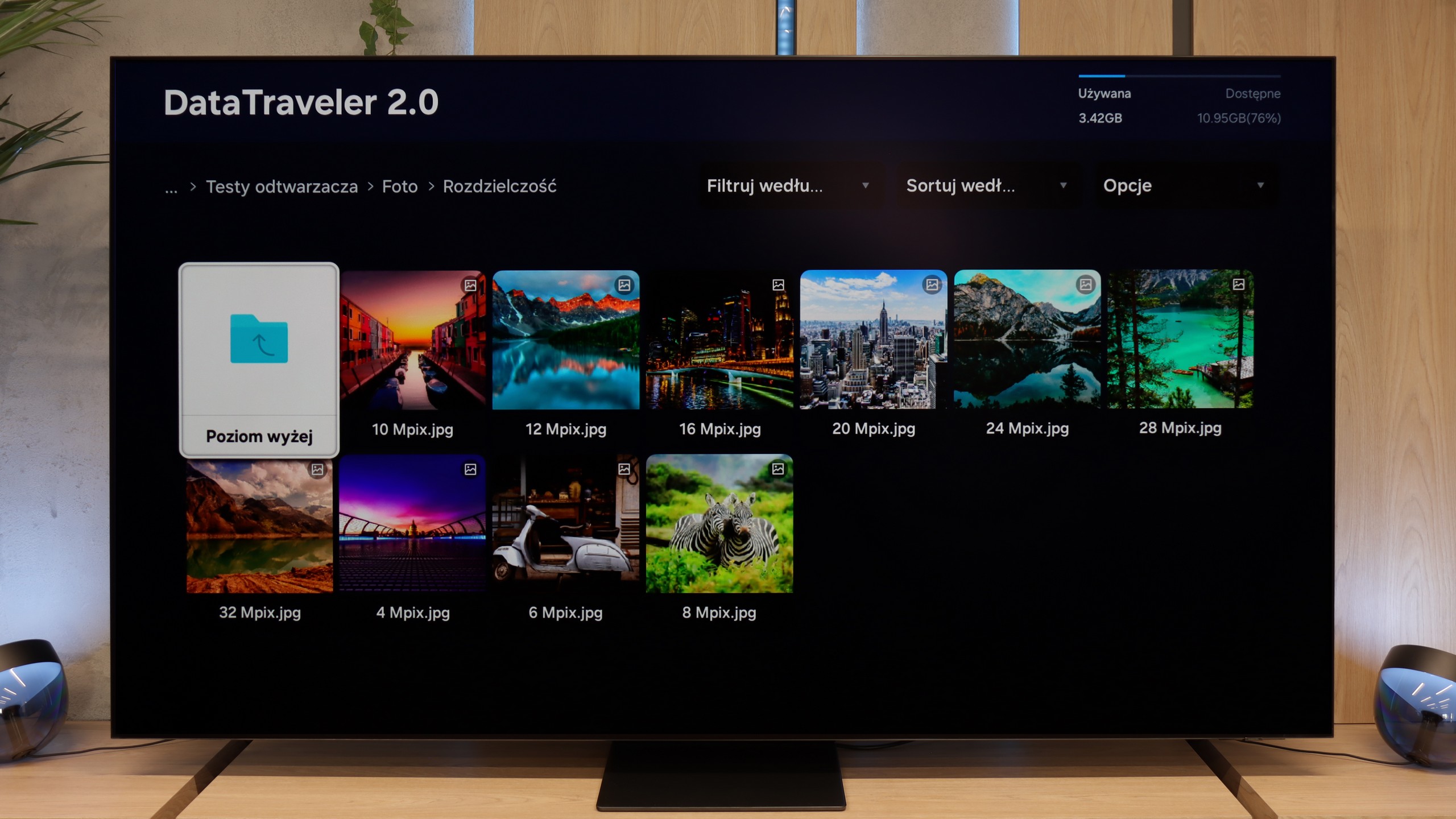
The built-in media player in the LG G5 is really quite good. It supports virtually everything you can expect from a modern television – most popular formats work without any issues, and the app's performance is fast. Our only disappointment was the lack of support for very high-bitrate HEVC files at 85 Mbit/s – similar to the C5 and B5 models. Interestingly, the same file played flawlessly on last year's LG OLEDs, so it's hard to say what has caused this change. Nevertheless, in everyday use, the G5 will handle the vast majority of materials, and there will be no need to connect any external devices for media playback.
The built-in media player in the S95F works quite well, although it is not without its limitations. It handles most popular video and audio formats, but there may be some reservations regarding photos. The manufacturer's claims do not always align with reality – for example, HEIC files refused to open. On the other hand, for most users, such a set of features will be perfectly adequate, while those who need something more advanced can always look for alternatives in the Tizen catalog (if they can find one) or use wireless connectivity 😉.
Apps
9.1/10
8.7/10














































Sound
8.7/10
8/10
- Maximum volume84dB82dB
- Dolby Digital Plus 7.1
- Dolby True HD 7.1
- Dolby Atmos in Dolby Digital Plus (JOC)
- Dolby Atmos in Dolby True HD
- DTS:X in DTS-HD MA
- DTS-HD Master Audio
The sound on the LG G5, considering its slim design, is truly phenomenal. When listening to music, you can sense a light, pleasant bass, and in films, the dialogue is clear and easy to hear – it doesn’t get lost even in dynamic scenes. Unfortunately, a bit of a disappointment is the lack of support for the DTS format, which LG used in its older models. It's a shame, as many home theatre enthusiasts might see this as a step backwards.
The built-in speakers of the S95F can positively surprise – they play pleasantly and clearly, and despite the slim construction of the TV, it's hard to say that the sound is flat. Sure, there could be more bass, but that's a natural compromise with such a thin casing. For everyday watching of movies or series, the set performs excellently. Those who enjoy stronger experiences should consider a soundbar – preferably one with Q-Symphony support. Then the TV speakers and the Samsung soundbar work together.
Acoustic Measurements
84dBC (Max)
75dBC
82dBC (Max)
75dBC
